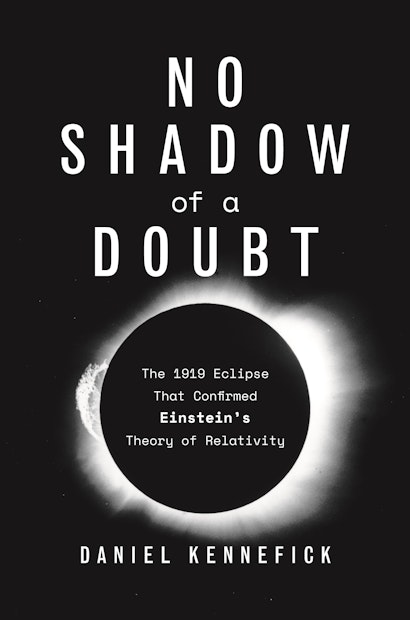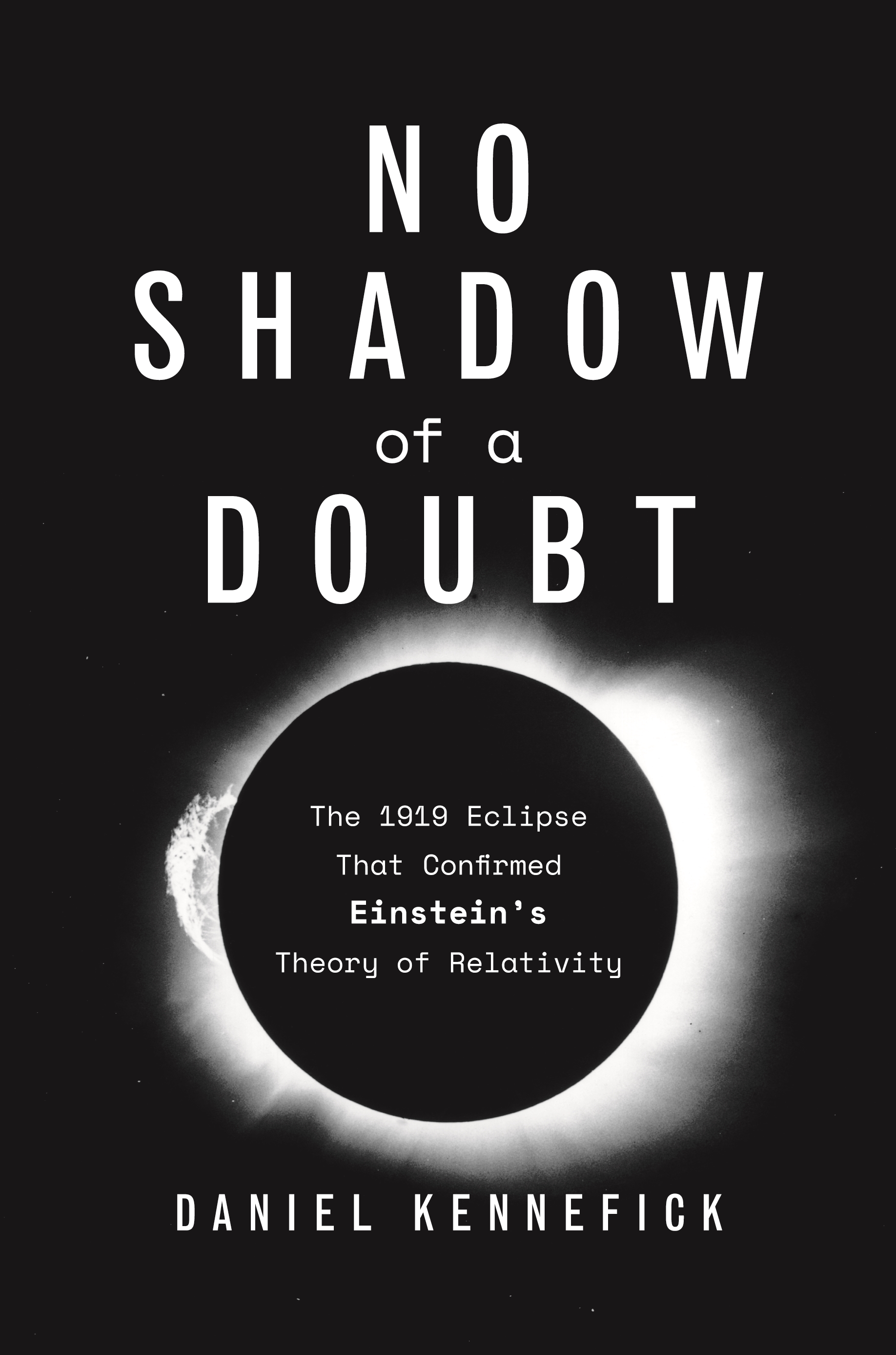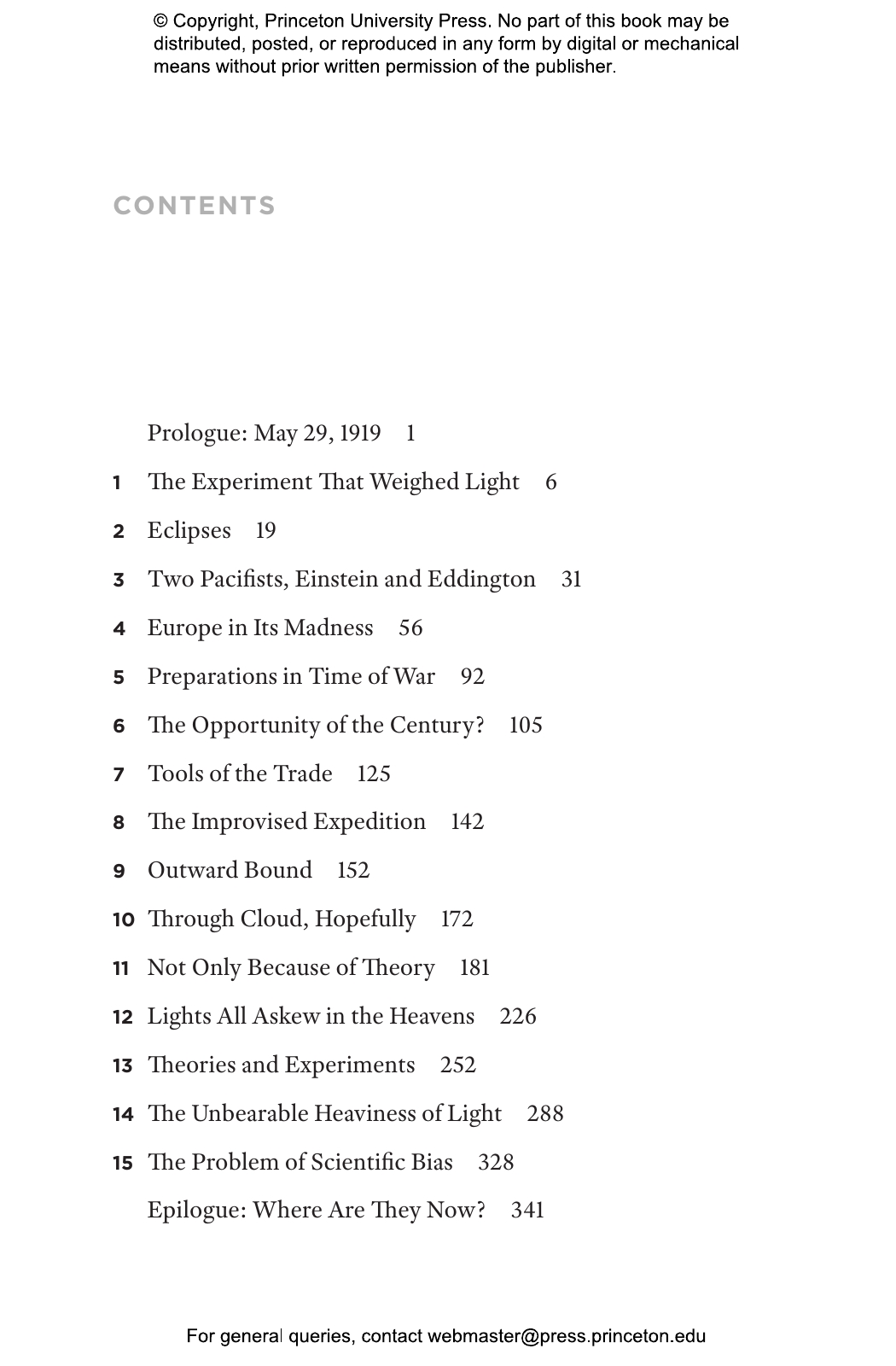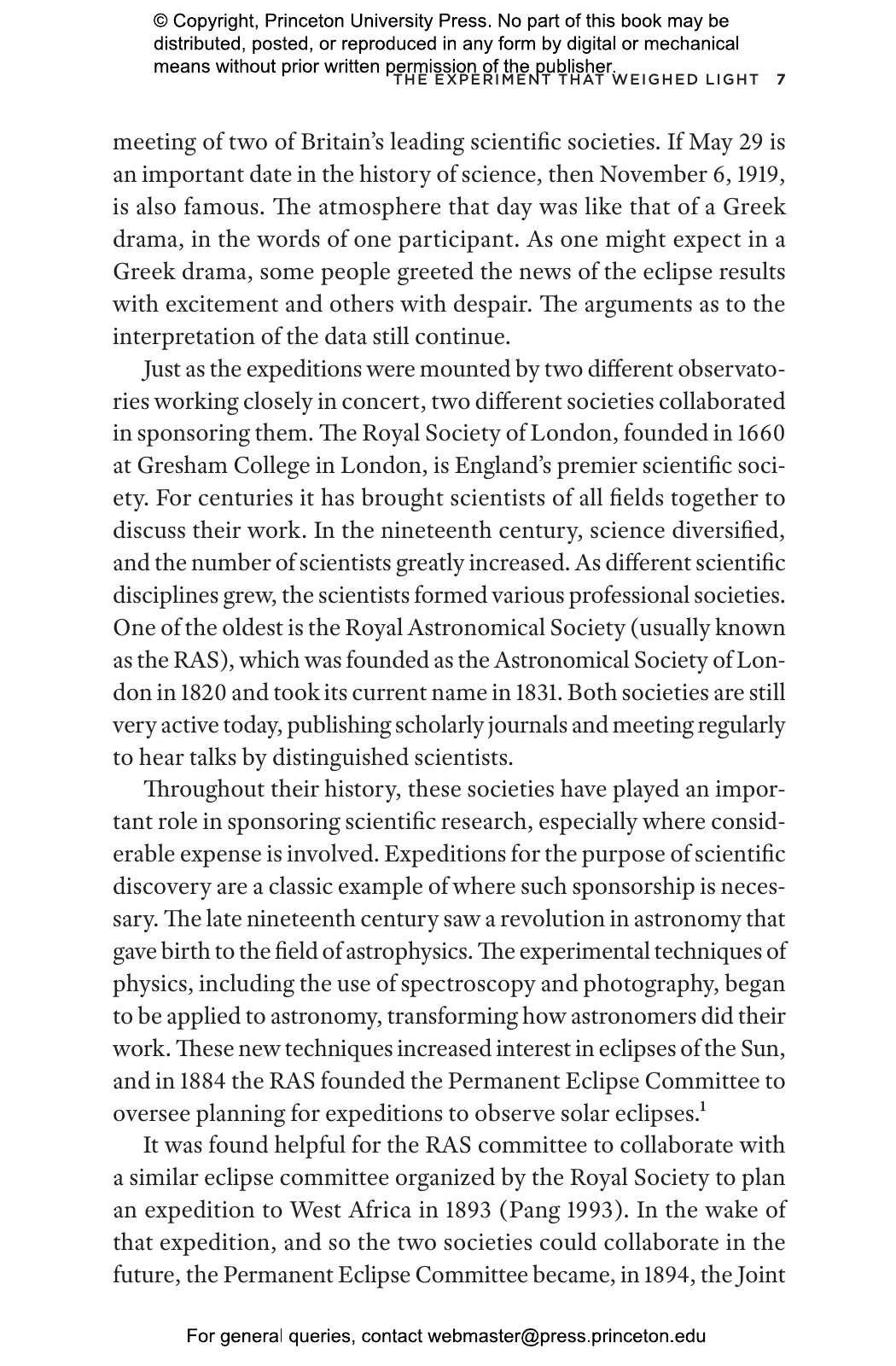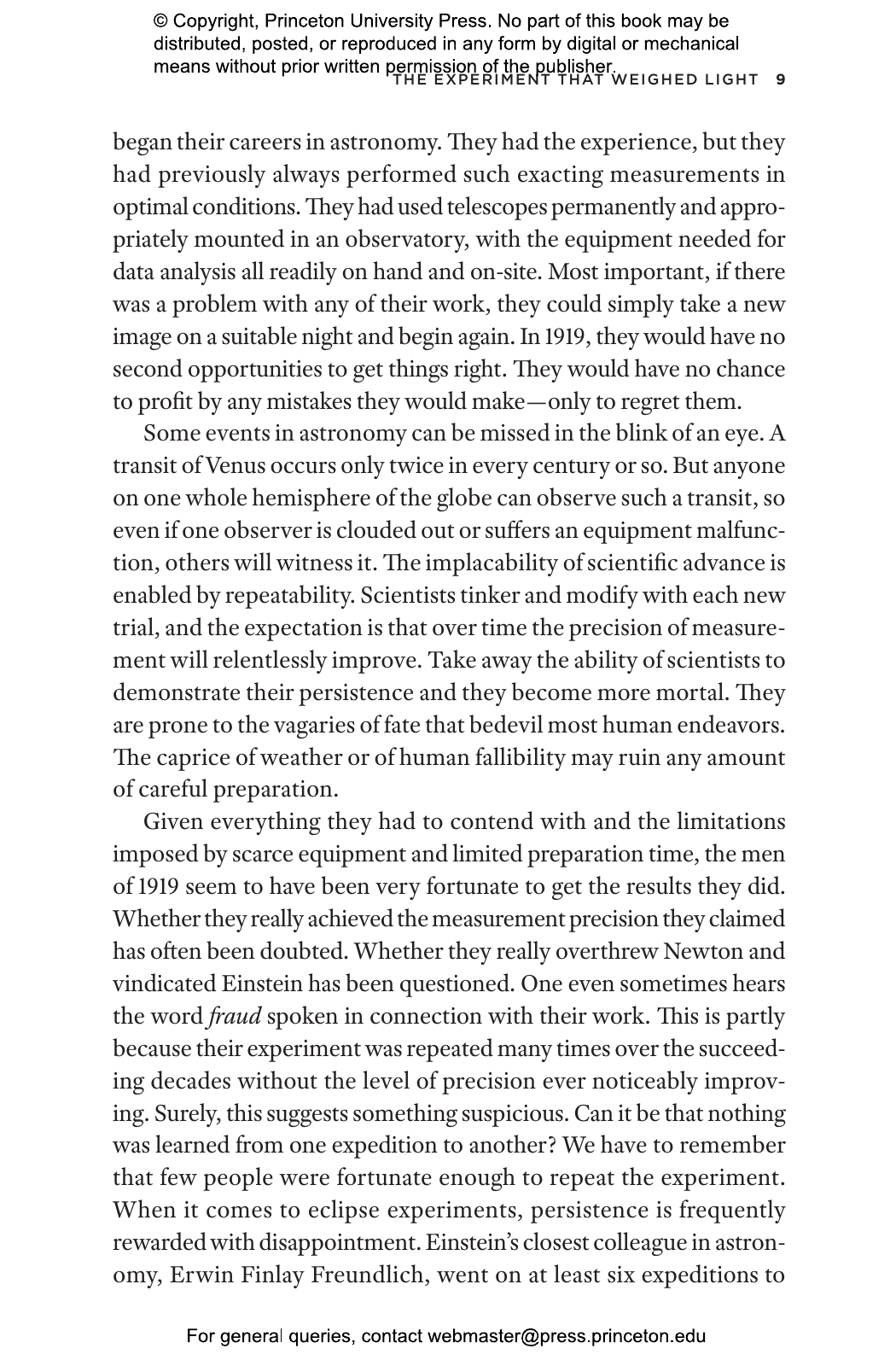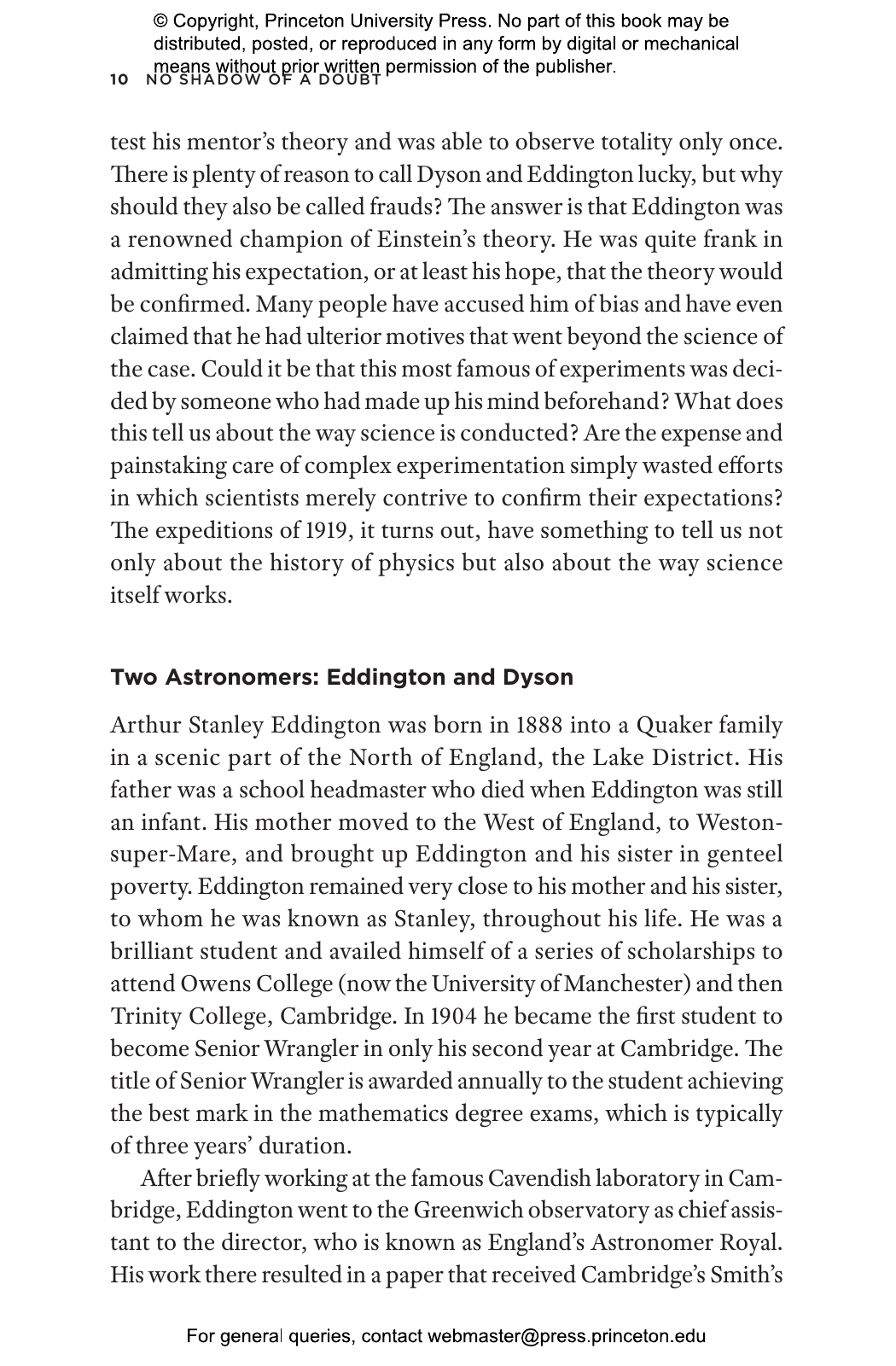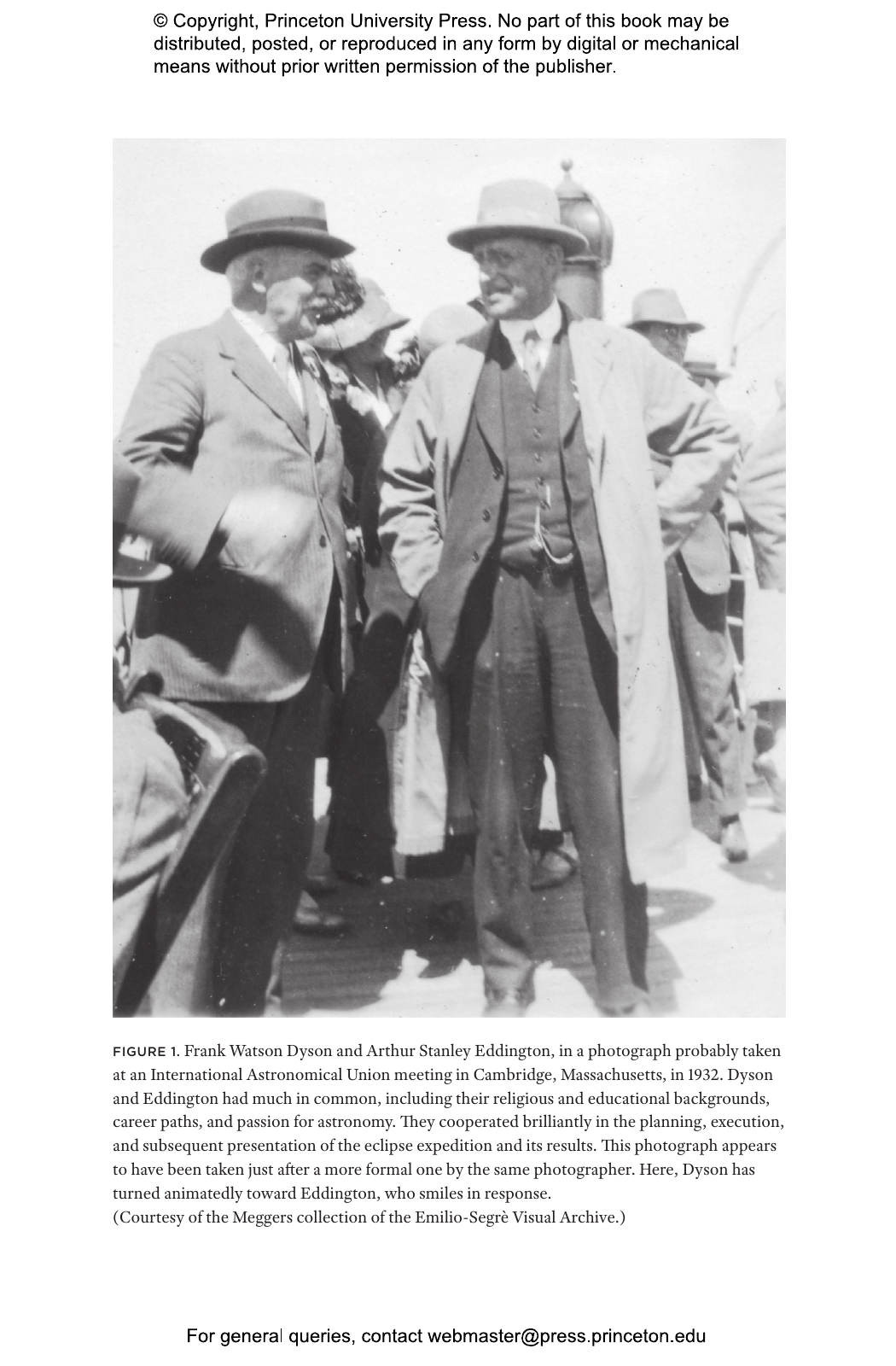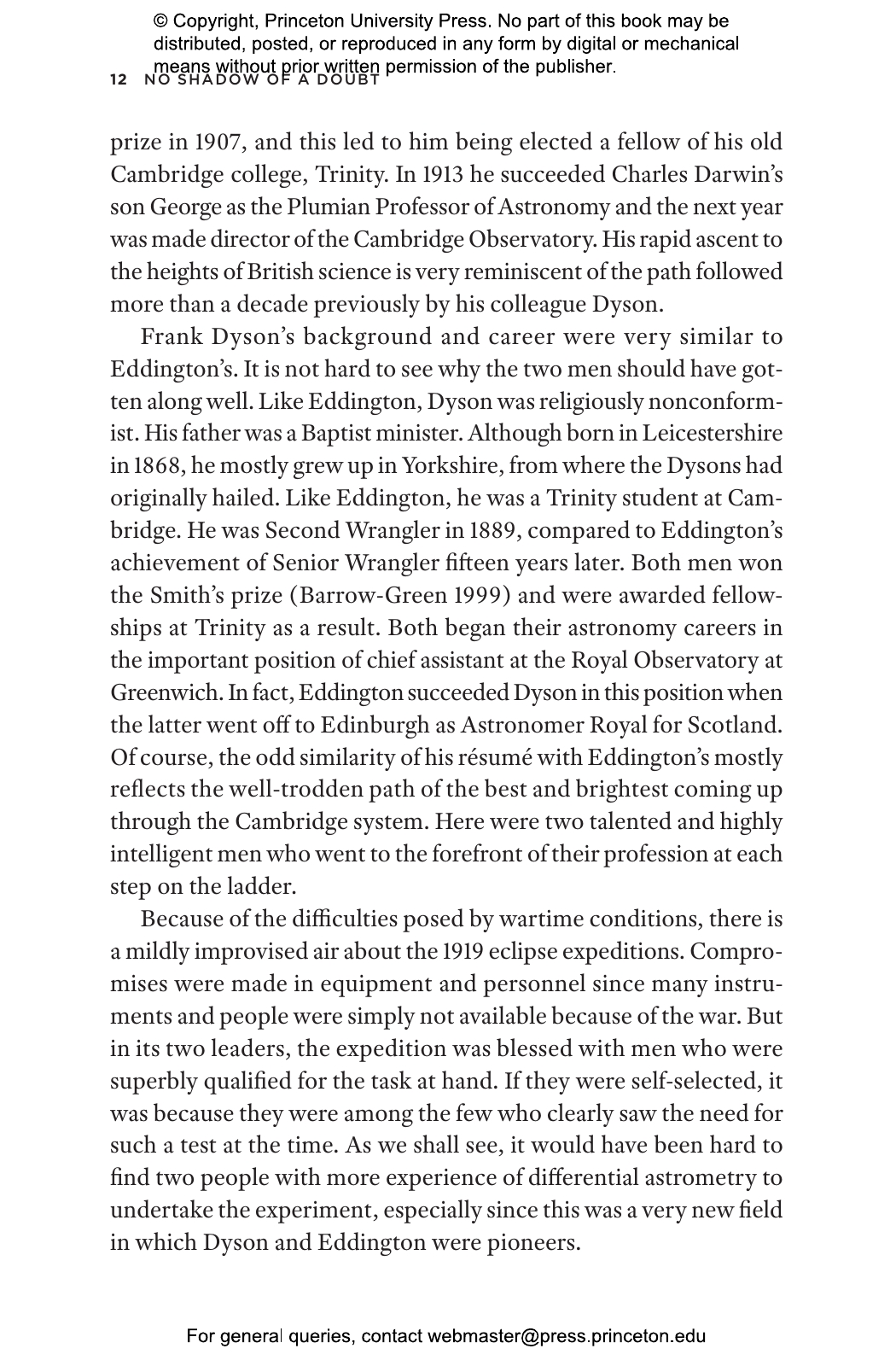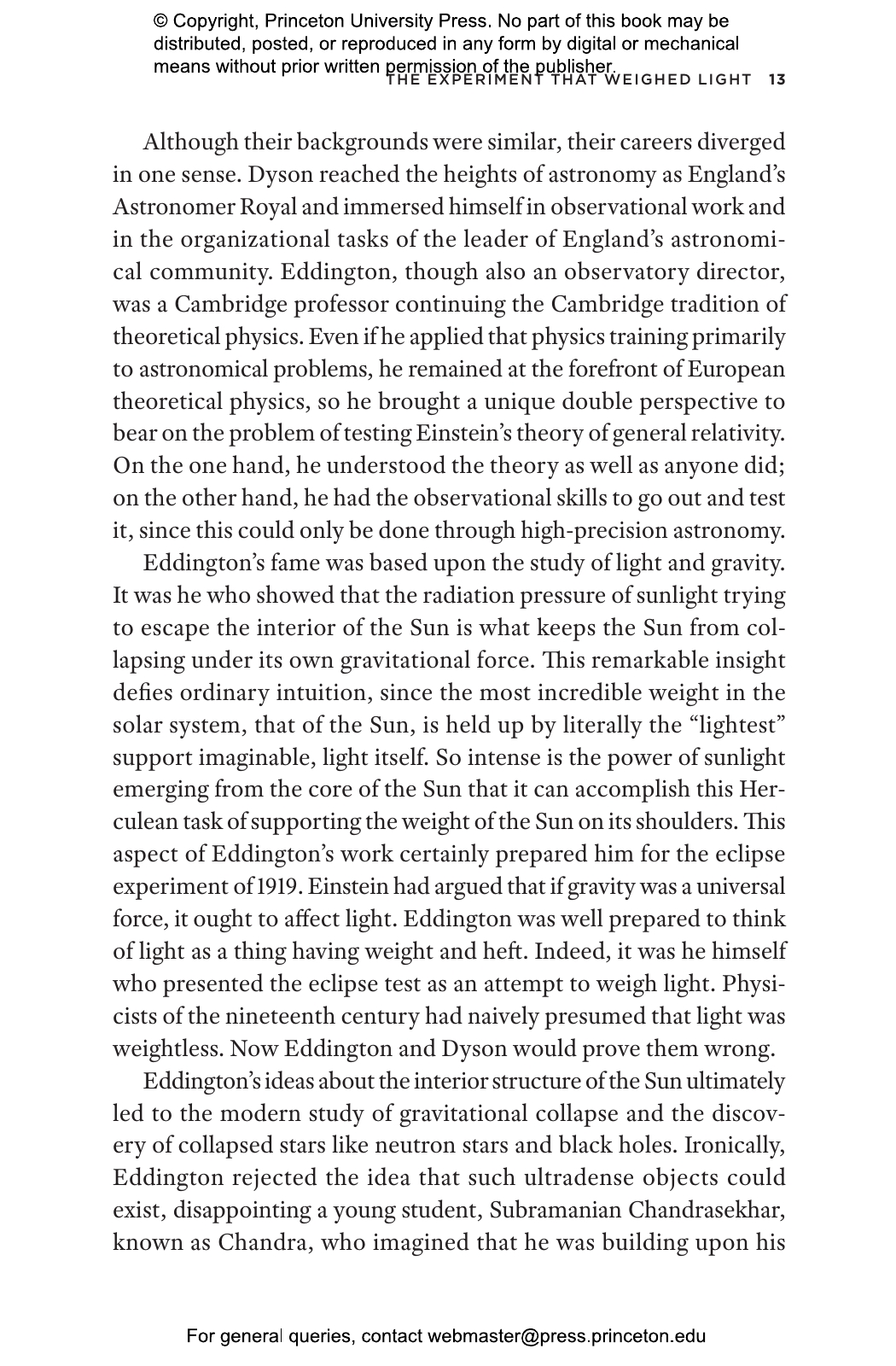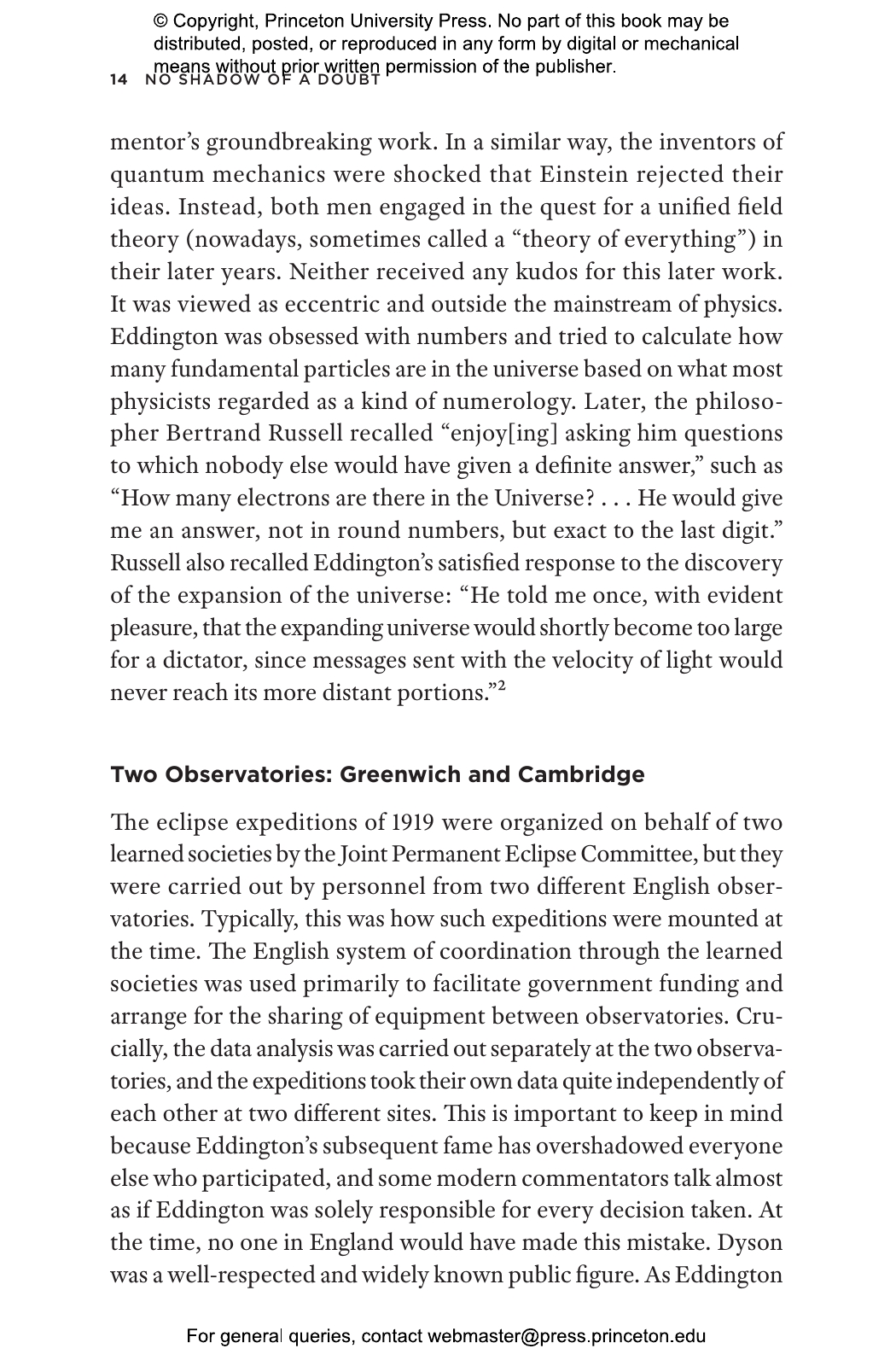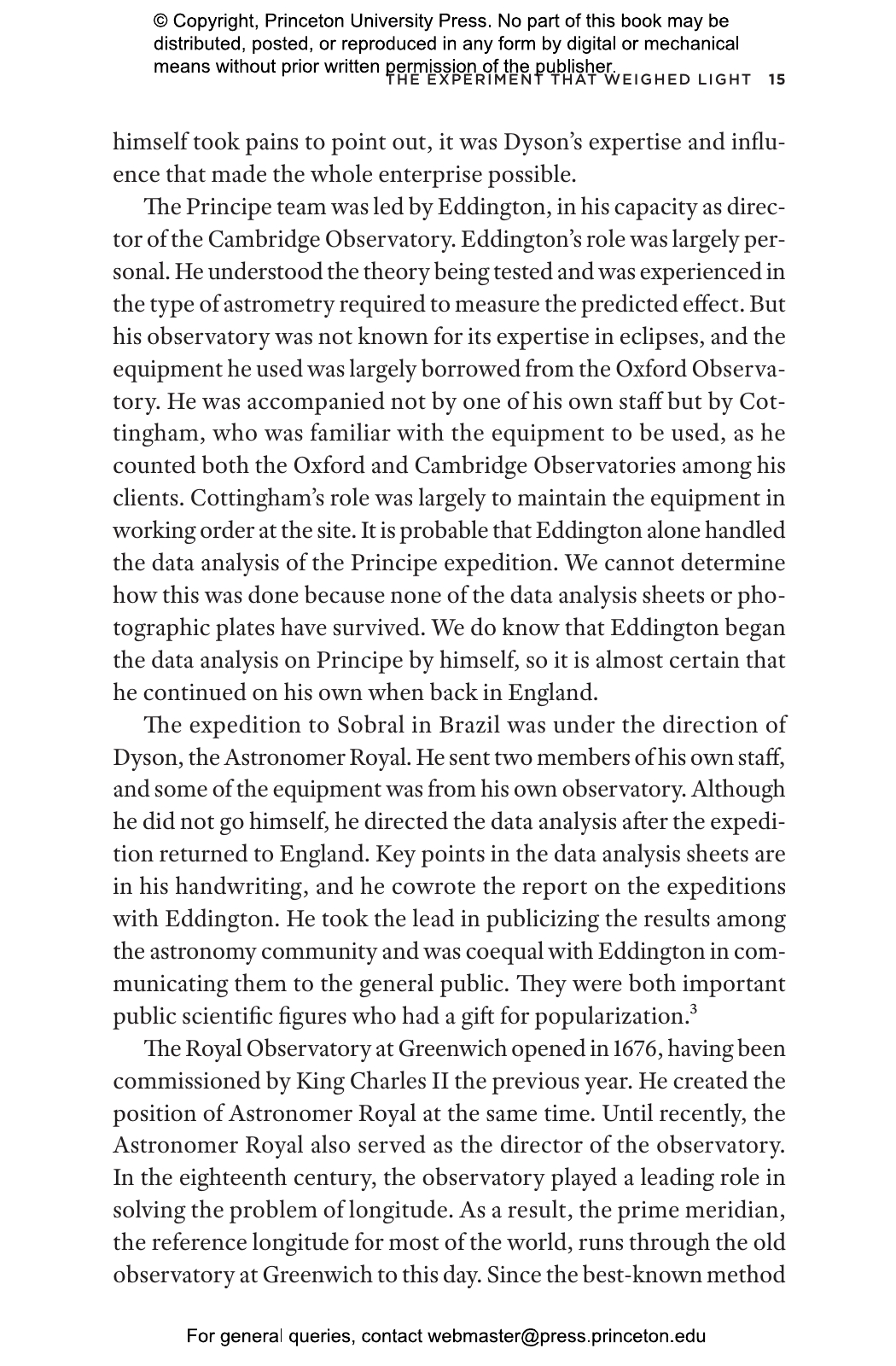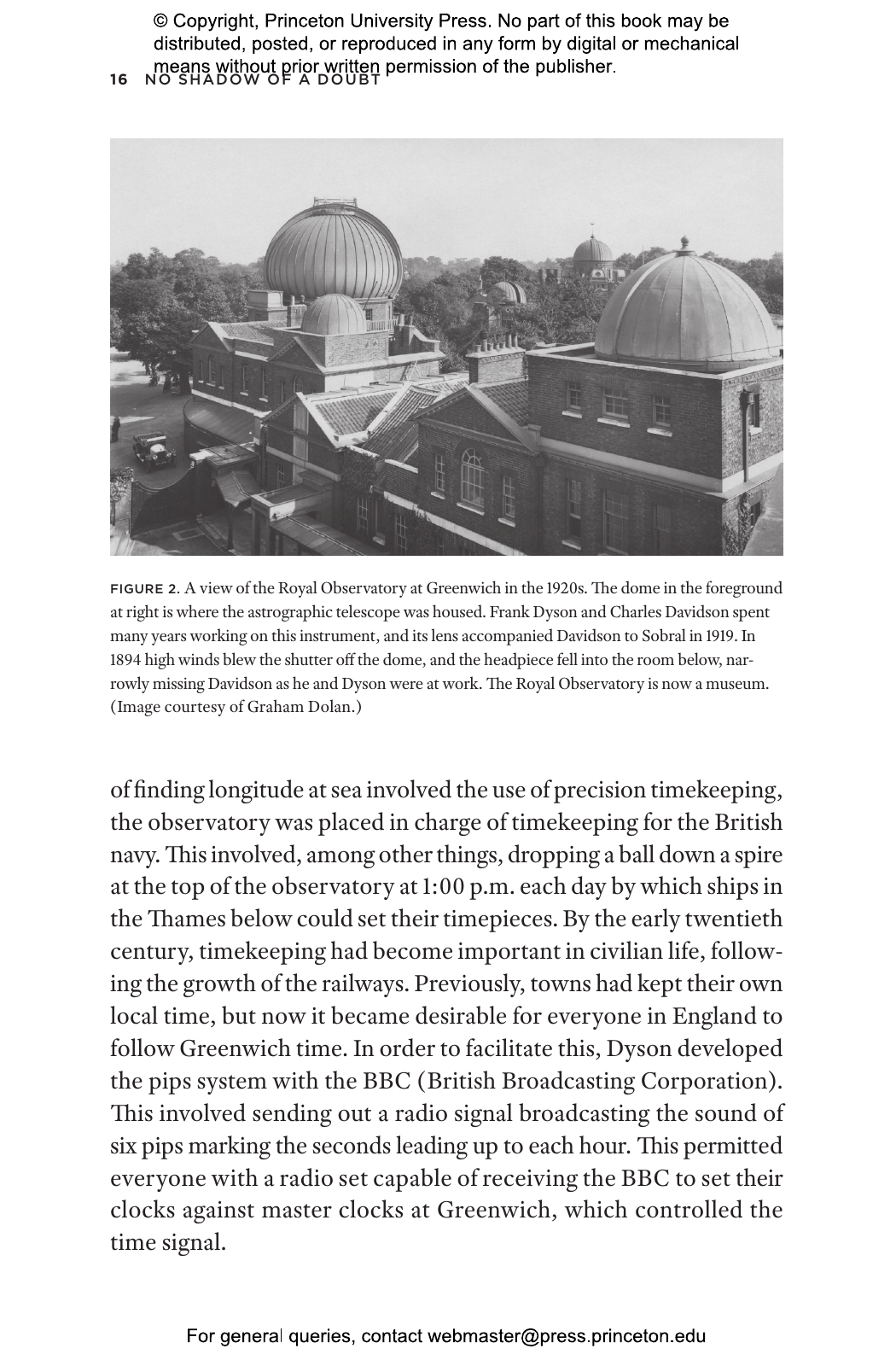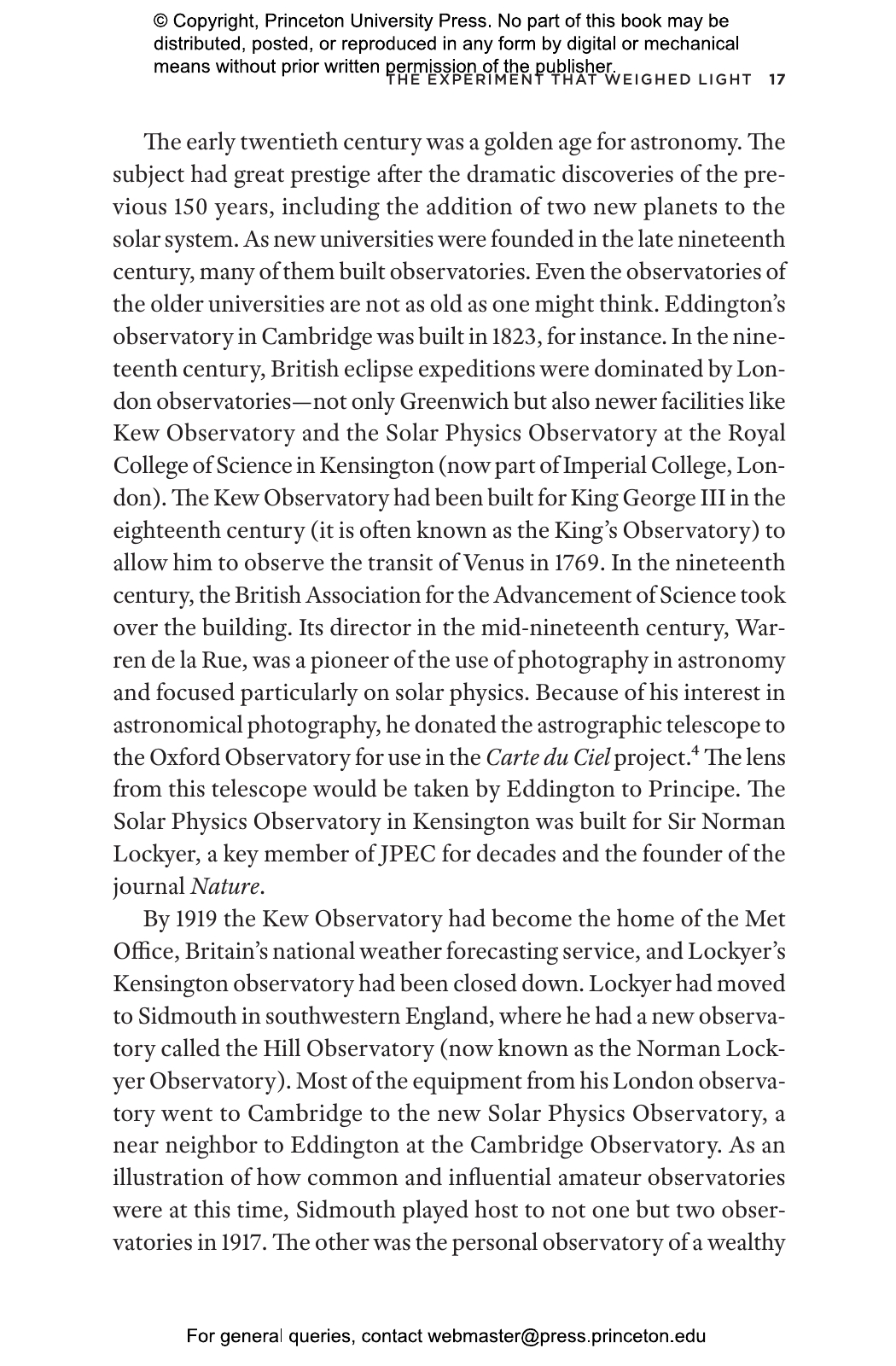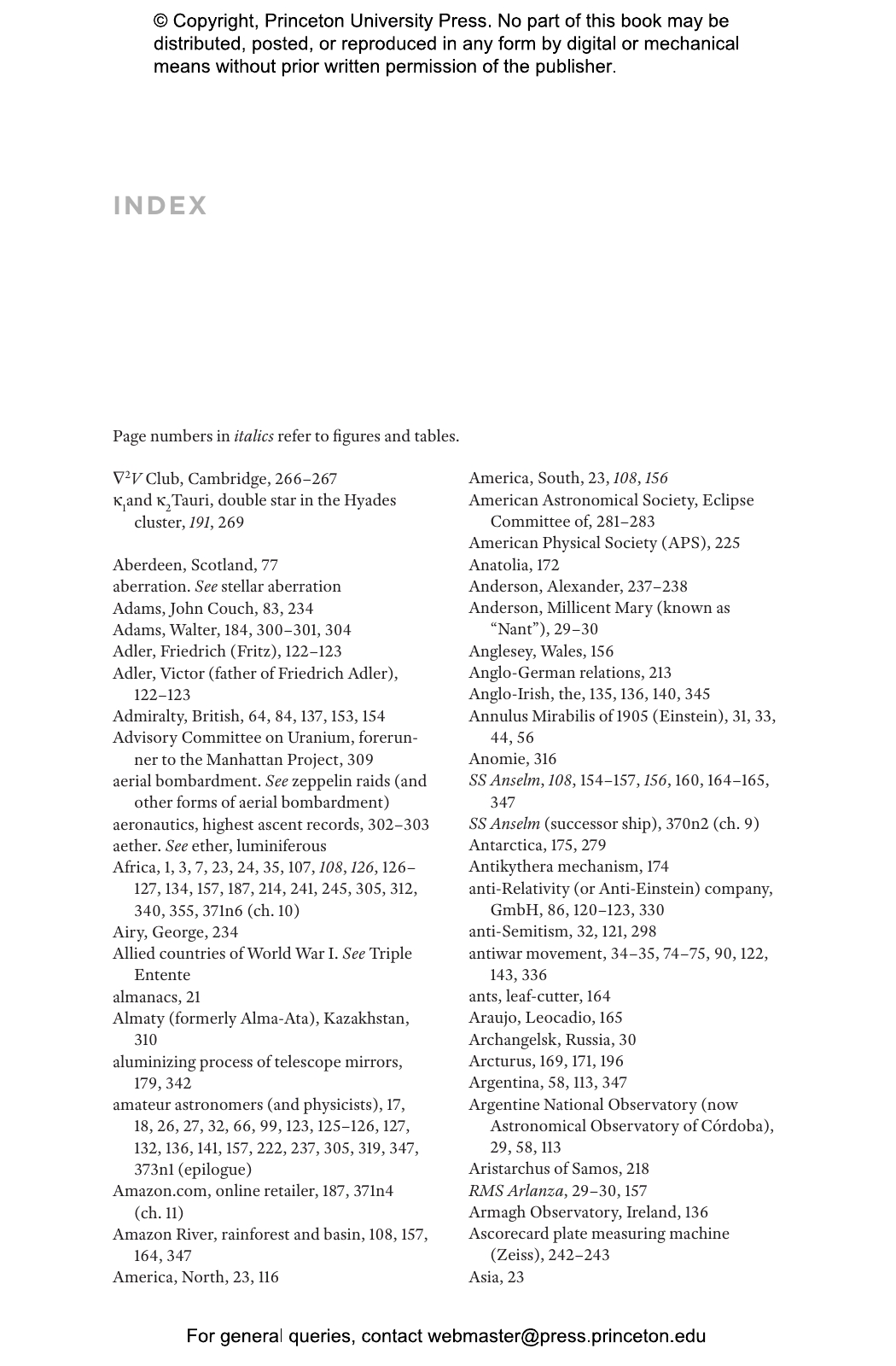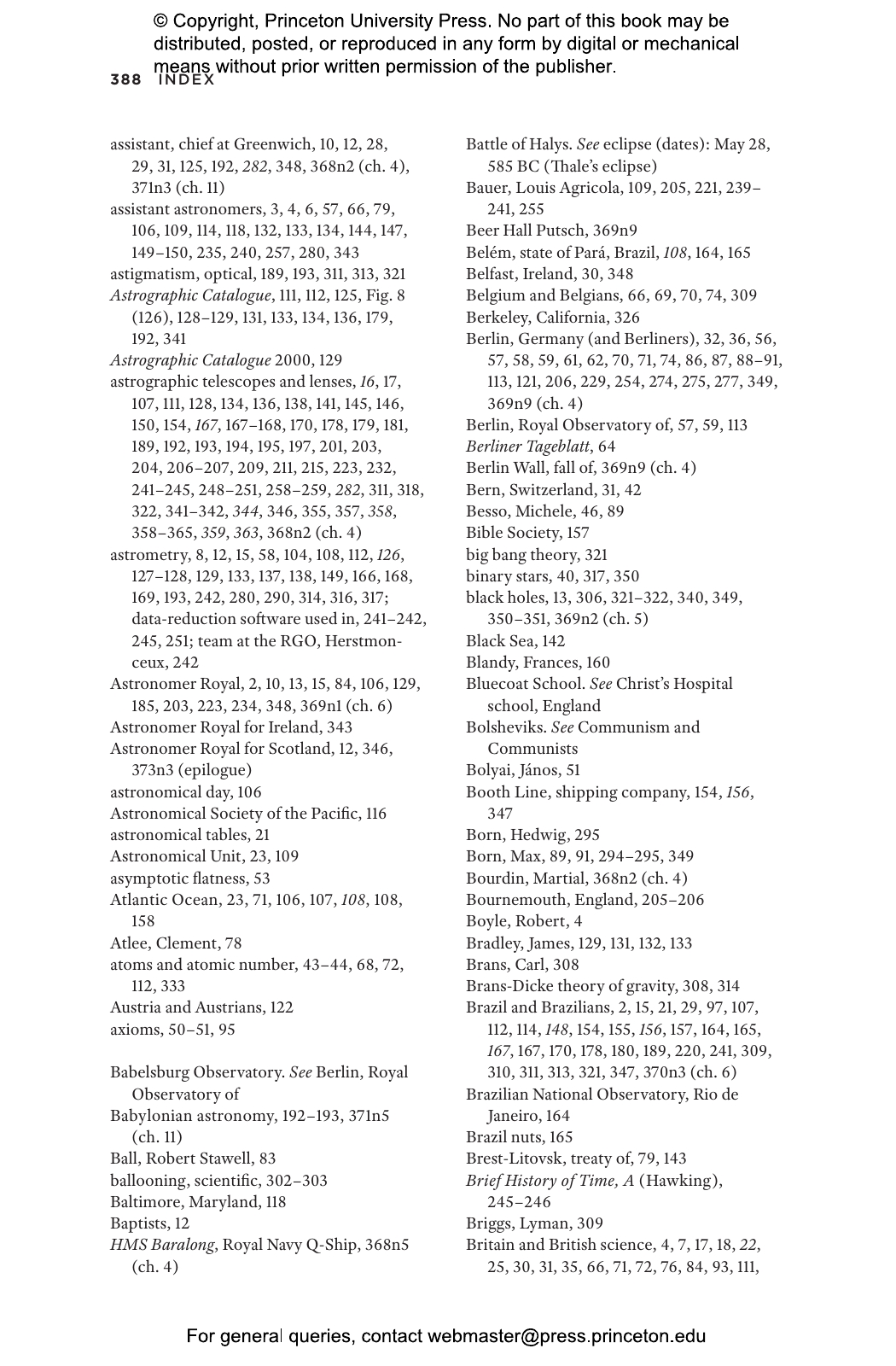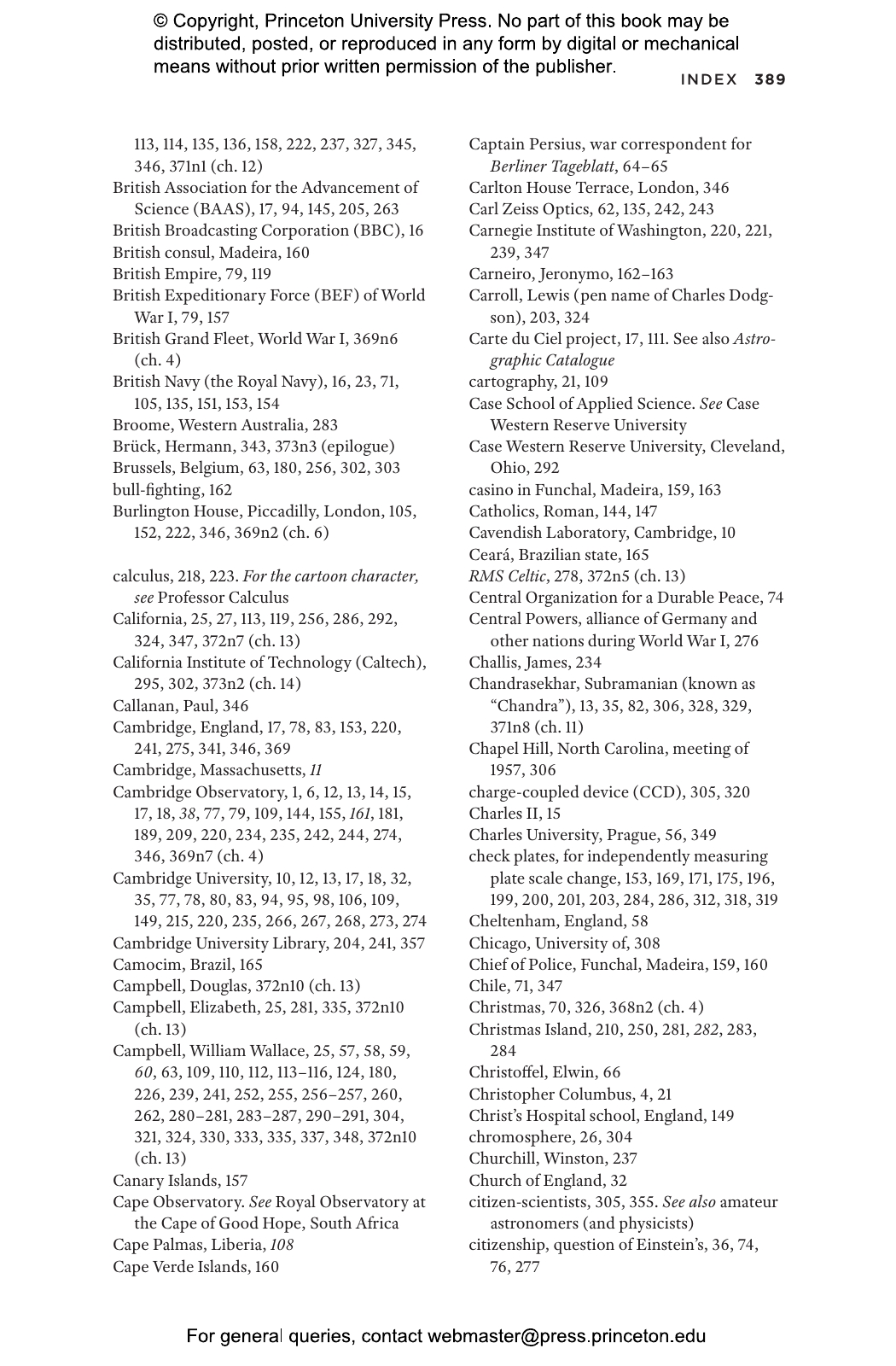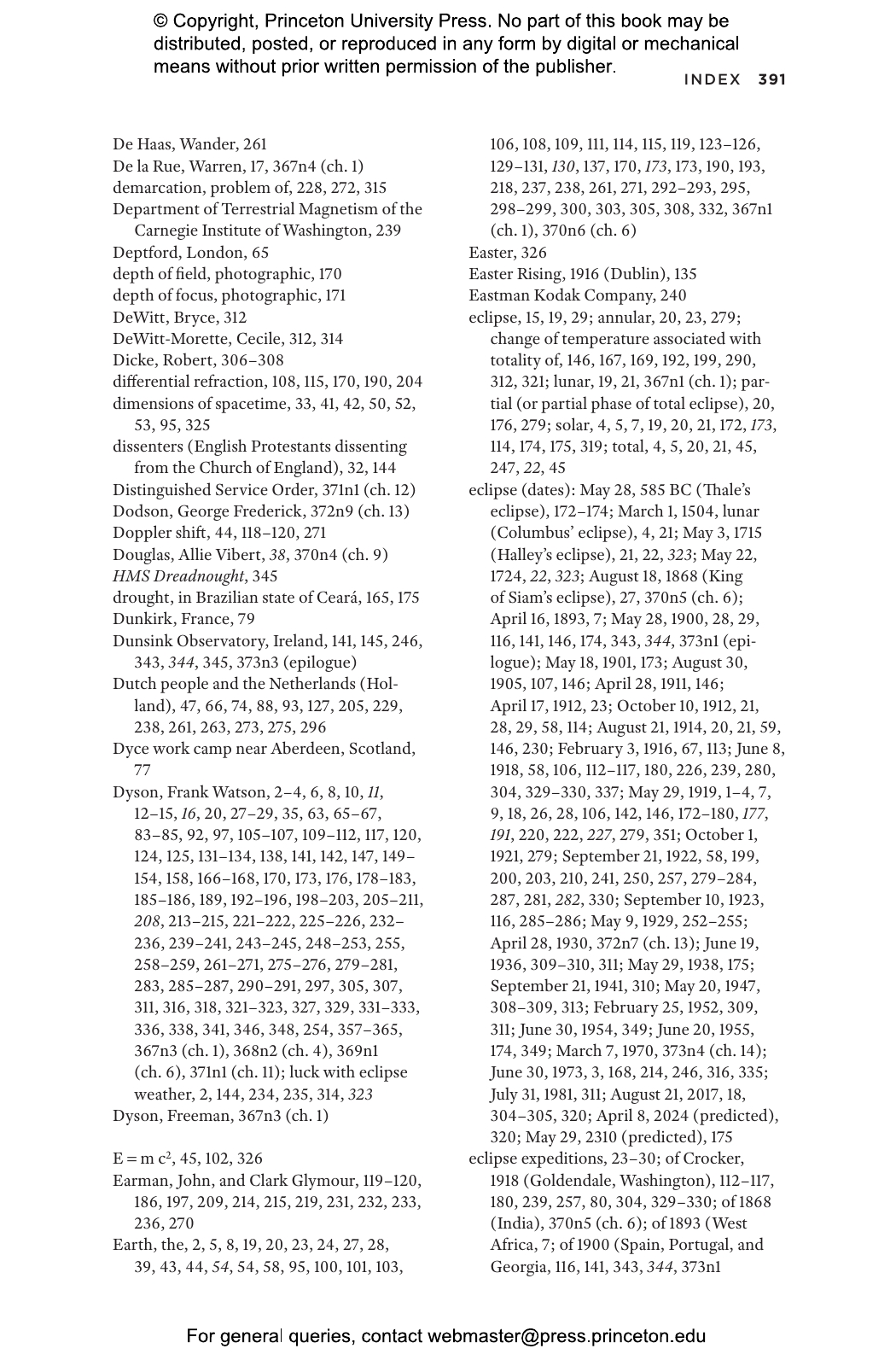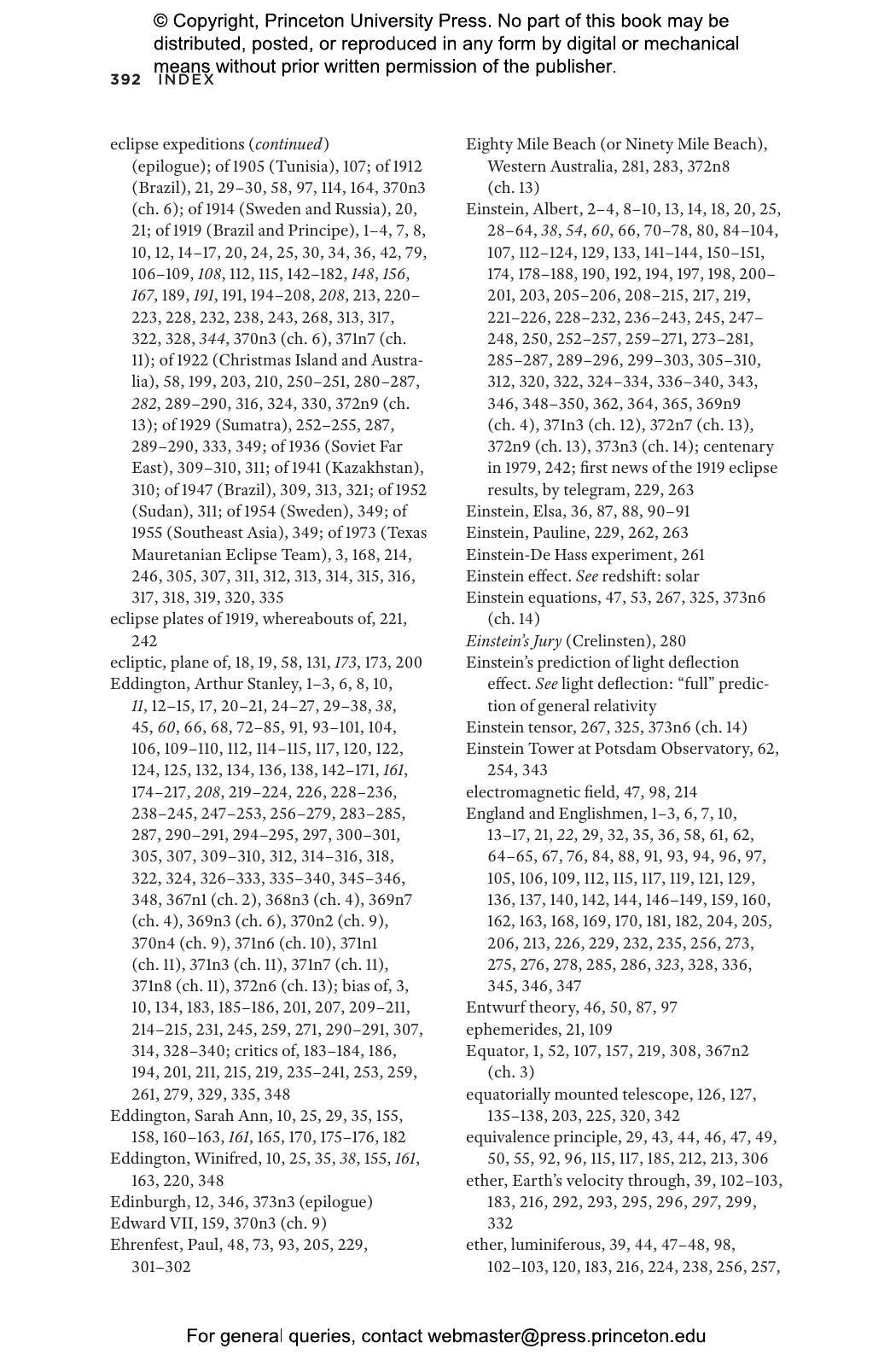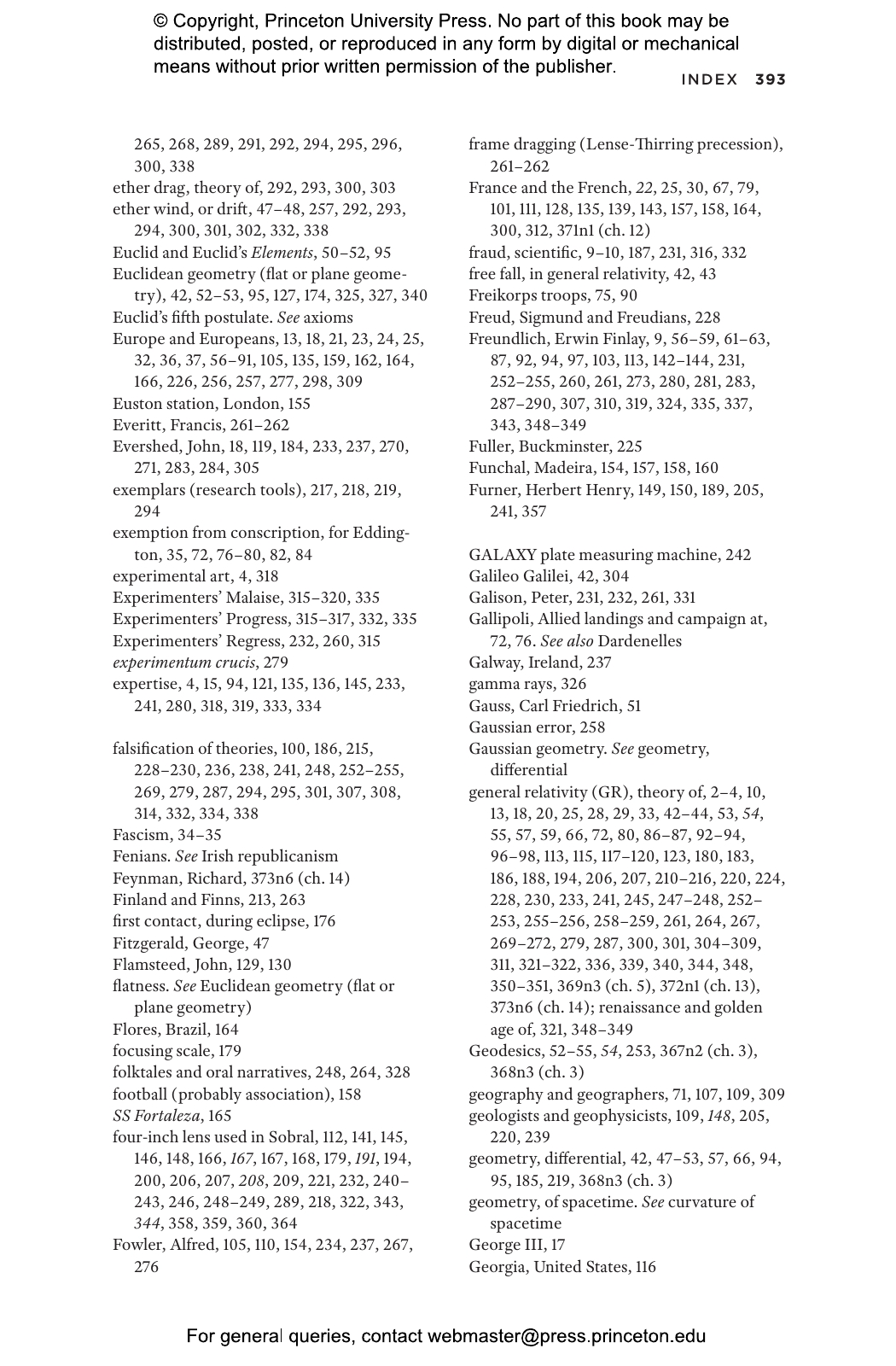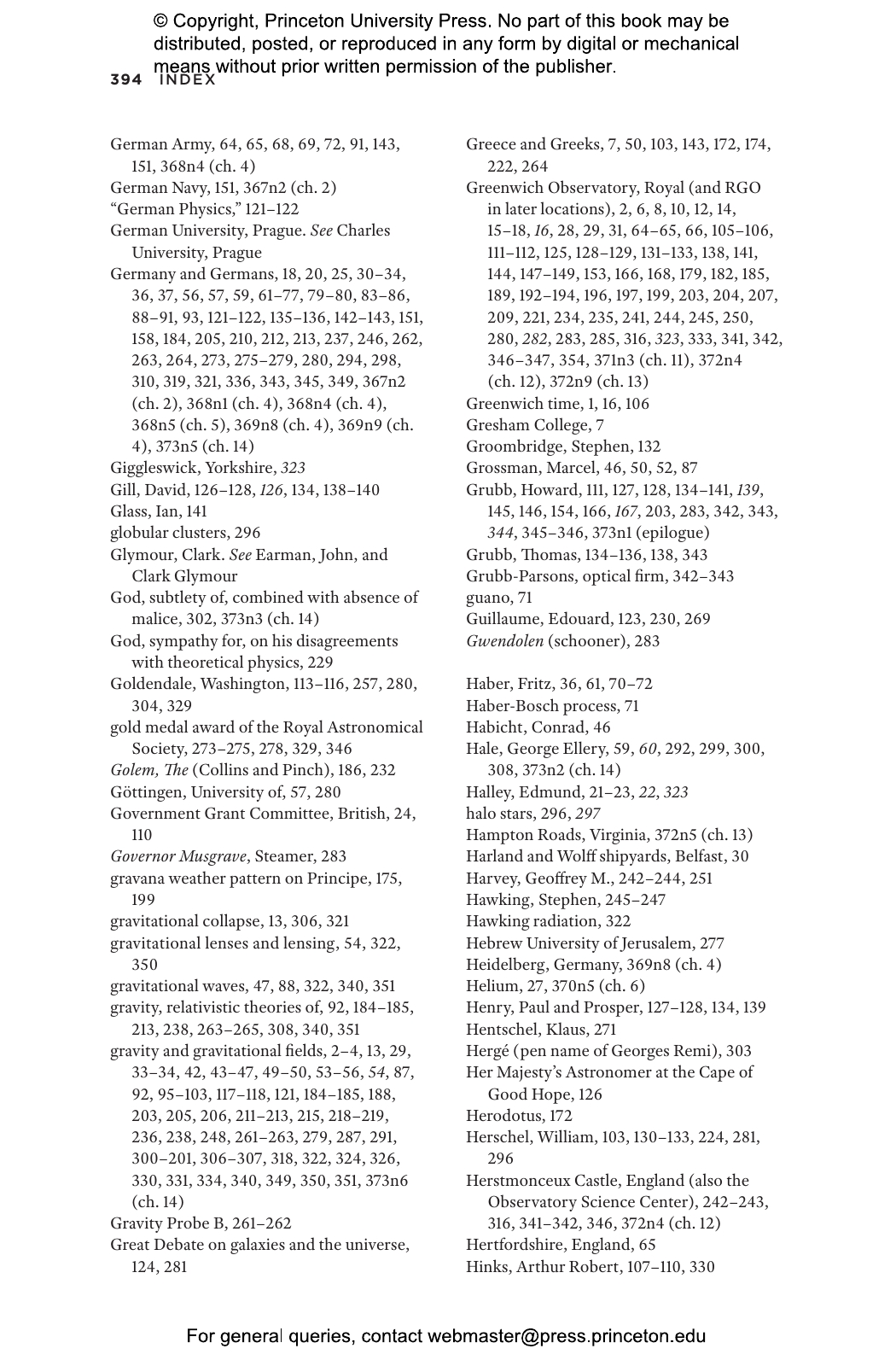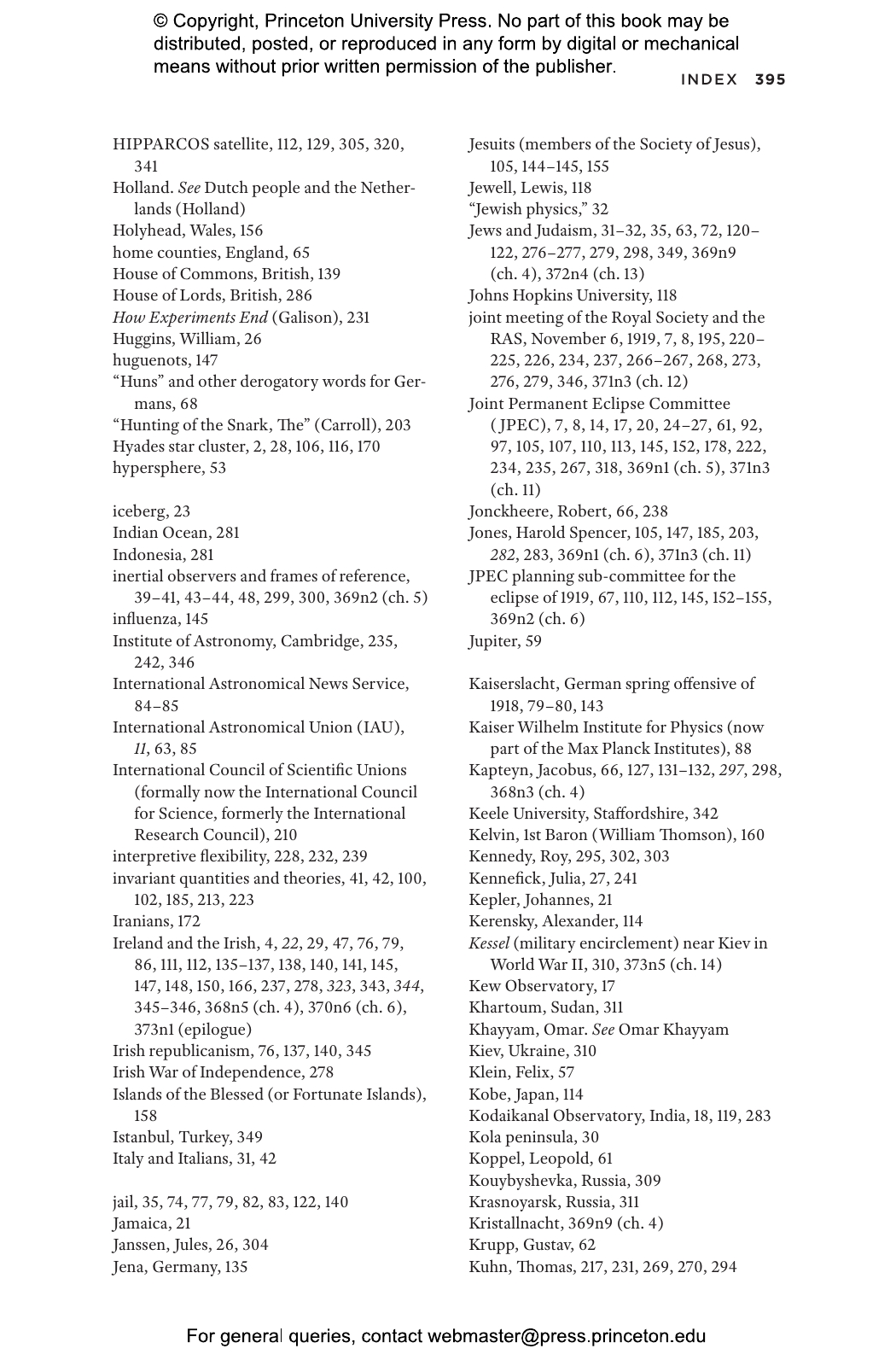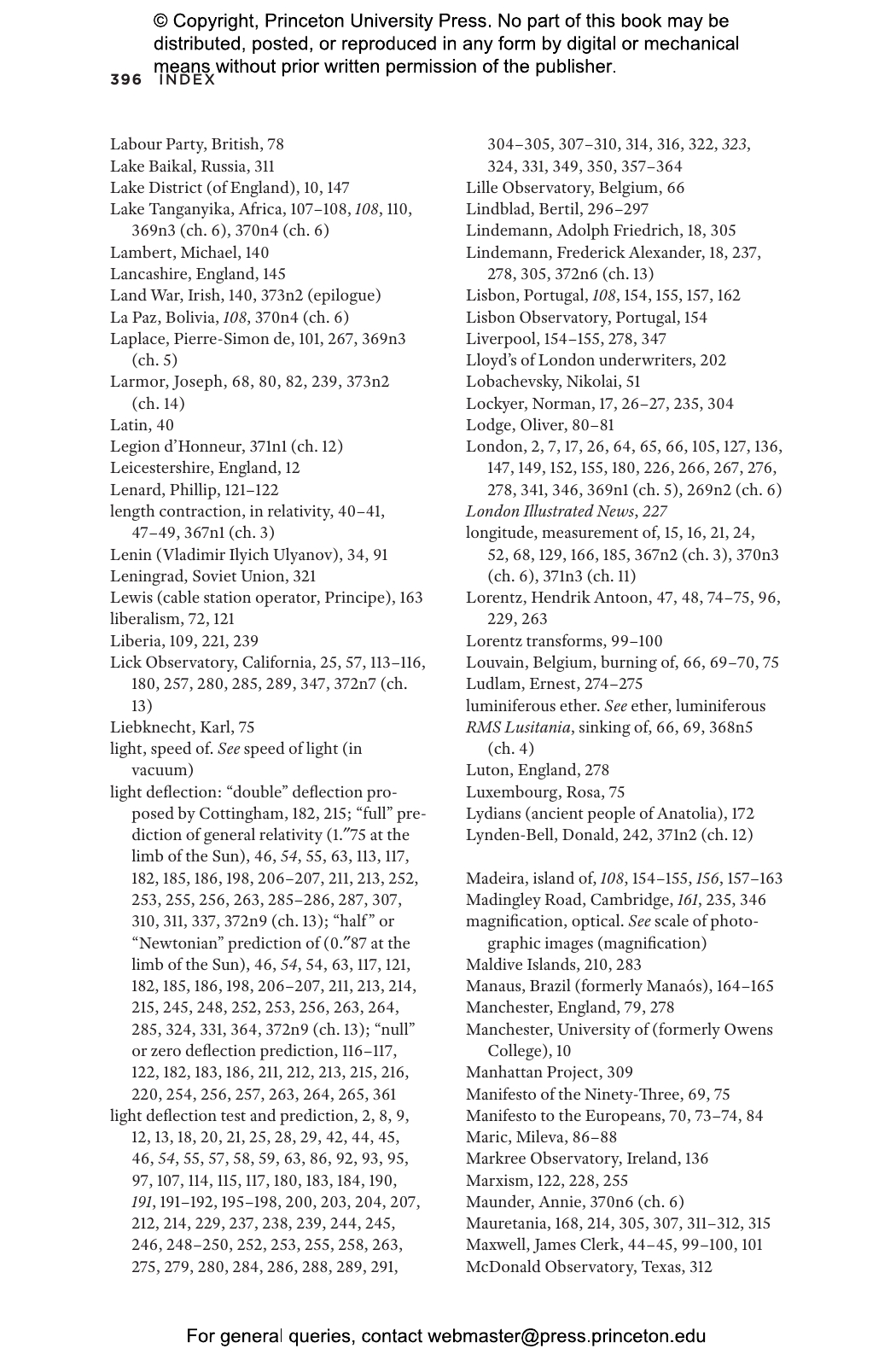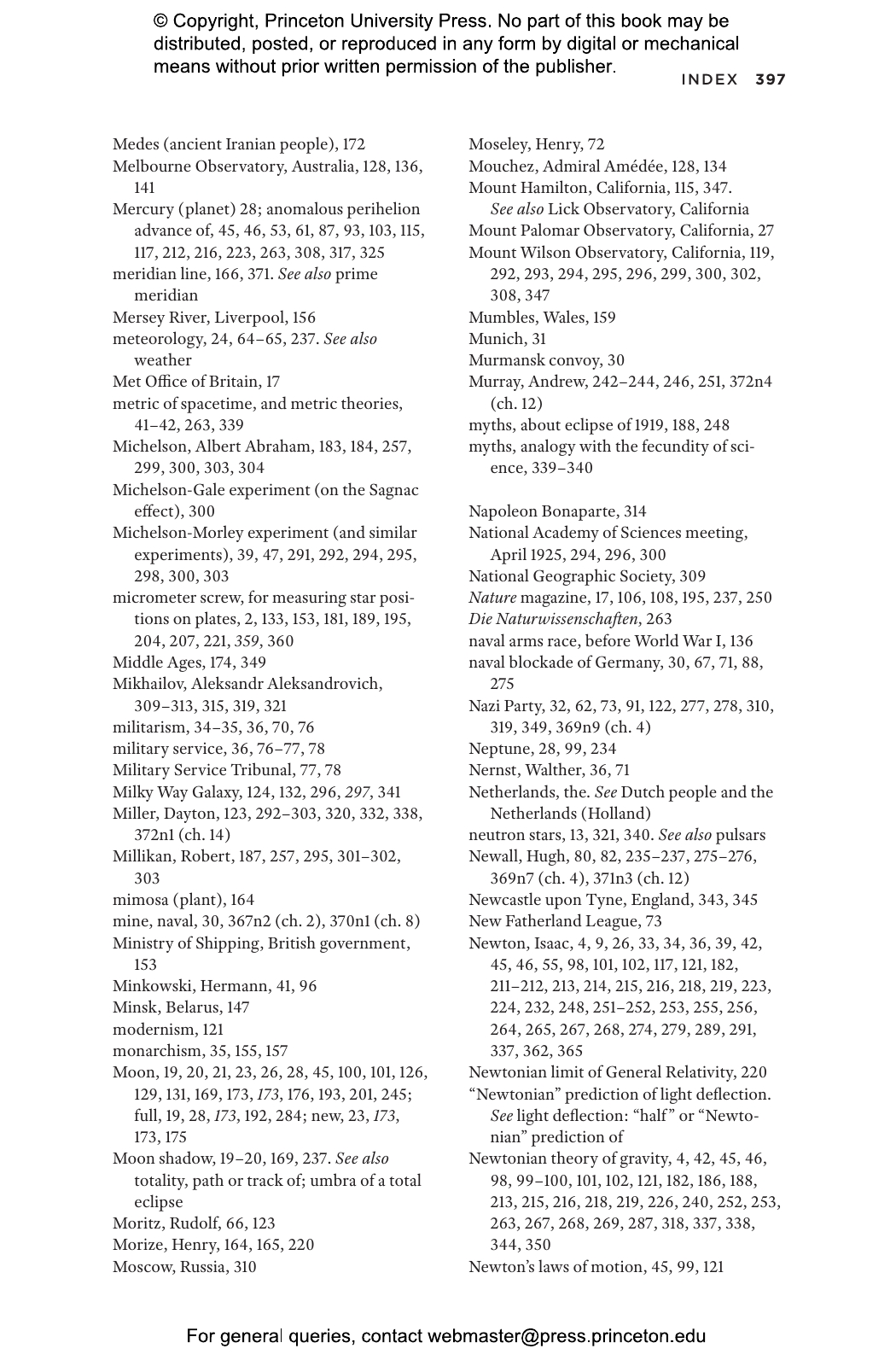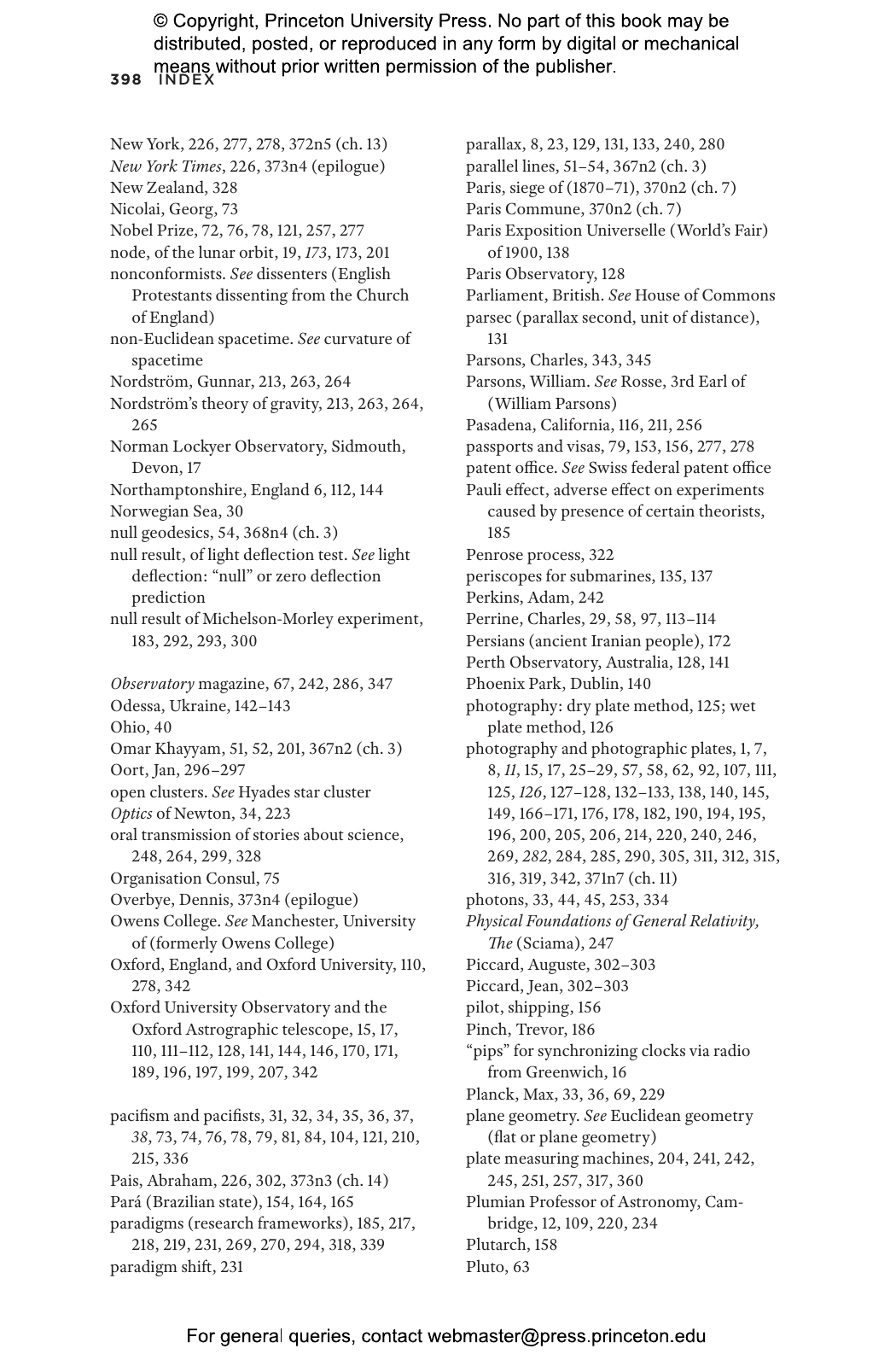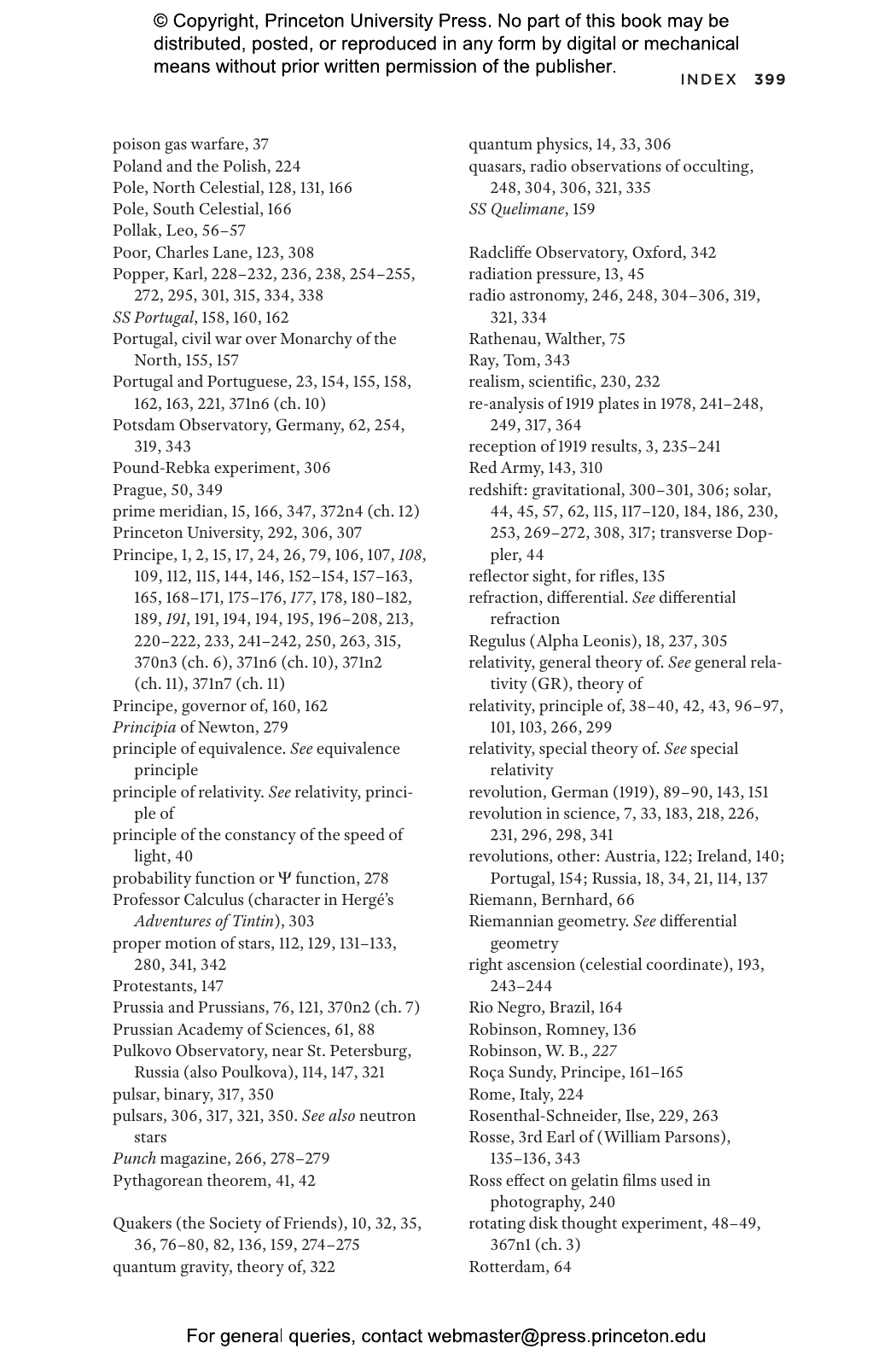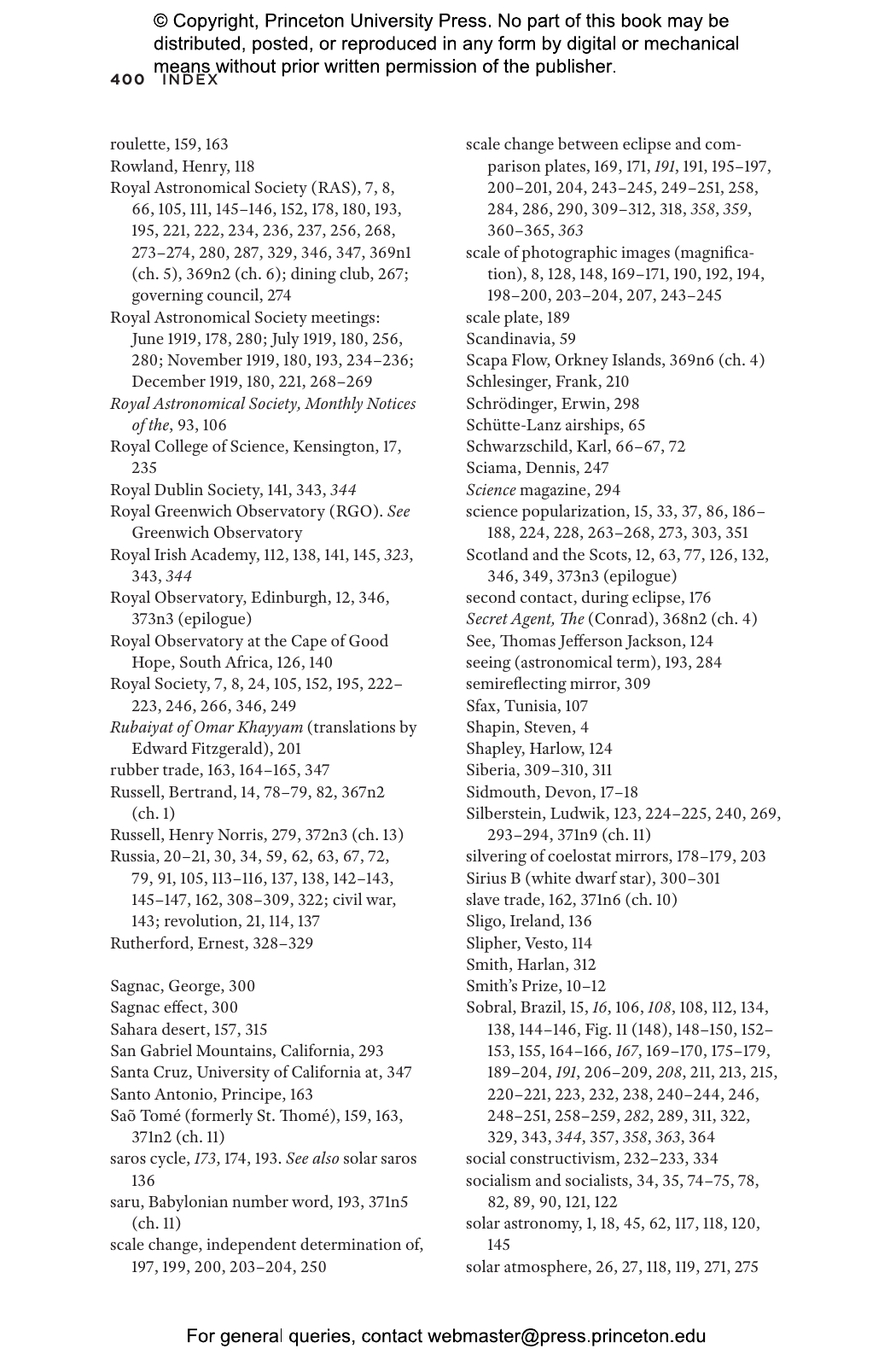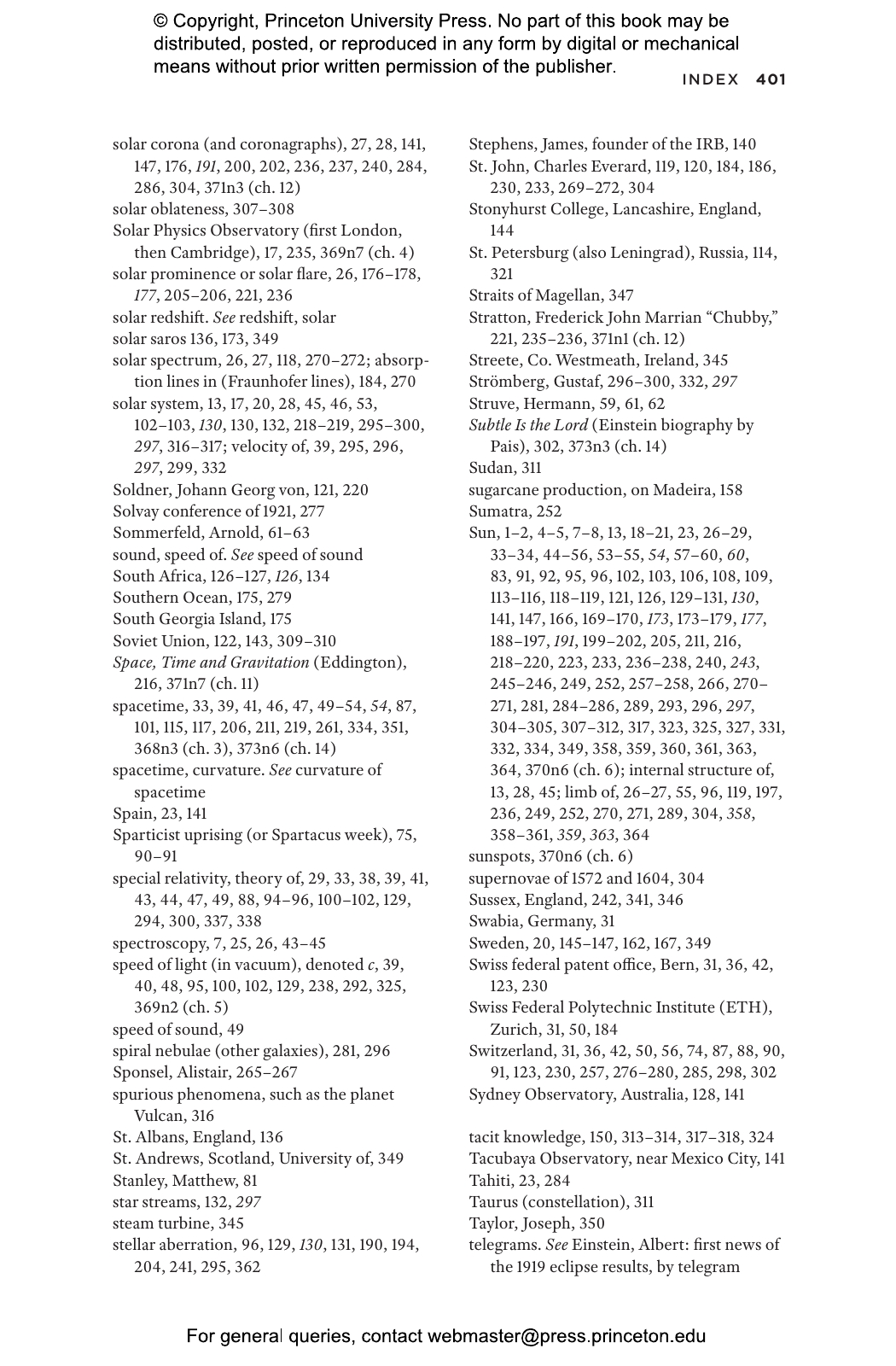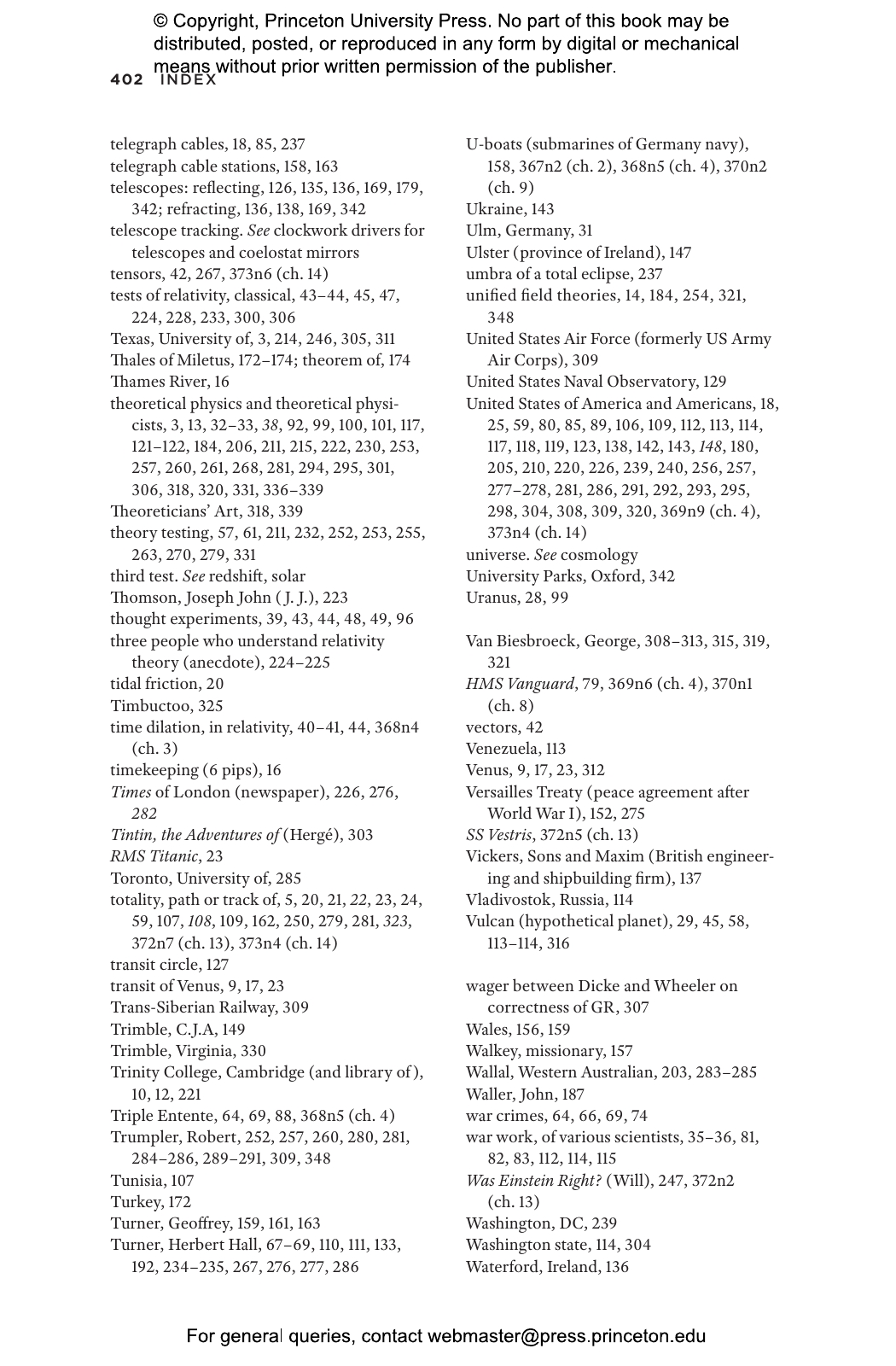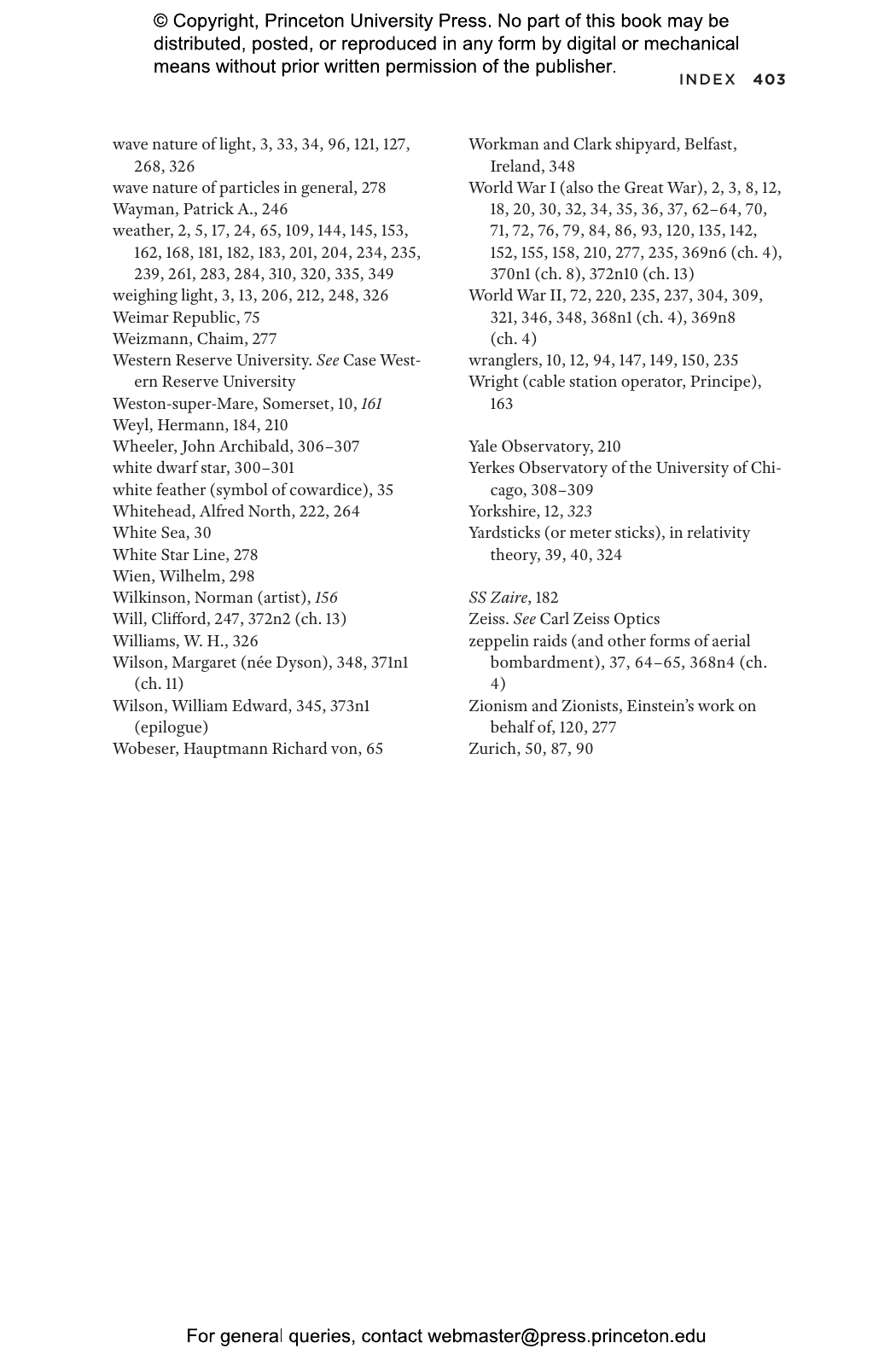In 1919, British scientists led extraordinary expeditions to Brazil and Africa to test Albert Einstein’s revolutionary new theory of general relativity in what became the century’s most celebrated scientific experiment. The result ushered in a new era and made Einstein a global celebrity by confirming his dramatic prediction that the path of light rays would be bent by gravity. Today, Einstein’s theory is scientific fact. Yet the effort to “weigh light” by measuring the gravitational deflection of starlight during the May 29, 1919, solar eclipse has become clouded by myth and skepticism. Could Arthur Eddington and Frank Dyson have gotten the results they claimed? Did the pacifist Eddington falsify evidence to foster peace after a horrific war by validating the theory of a German antiwar campaigner? In No Shadow of a Doubt, Daniel Kennefick provides definitive answers by offering the most comprehensive and authoritative account of how expedition scientists overcame war, bad weather, and equipment problems to make the experiment a triumphant success.
The reader follows Eddington on his voyage to Africa through his letters home, and delves with Dyson into how the complex experiment was accomplished, through his notes. Other characters include Howard Grubb, the brilliant Irishman who made the instruments; William Campbell, the American astronomer who confirmed the result; and Erwin Findlay-Freundlich, the German whose attempts to perform the test in Crimea were foiled by clouds and his arrest.
By chronicling the expeditions and their enormous impact in greater detail than ever before, No Shadow of a Doubt reveals a story that is even richer and more exciting than previously known.
Awards and Recognition
- Finalist for the PROSE Award in History of Science, Medicine, and Technology, Association of American Publishers
- One of BBC Sky at Night Magazine's Best Astronomy and Space Books of 2019
- One of Nature's Top Ten Books of 2019
"[No Shadow of a Doubt] offers a richly detailed account of the protagonists and their success against long odds. Mr. Kennefick is at his most compelling when dissecting and refuting accusations of bias that have shrouded the historic feat."—Ray Jayawardhana, Wall Street Journal
"Kennefick brings a thrilling mix of ingredients together into a . . . rewarding read: the chutzpah of Einstein; the glamour, luck and sense of adventure of eclipse-chasing; the audacity of planning such a demanding experiment during the first world war and executing it in its chaotic aftermath."—Anjana Ahuja, Financial Times
"Physicist Kennefick narrates the buildup to, and fallout from, the experiment that confirmed Einstein’s radical idea and made him an international star."—Andrea Gawrylewski, Scientific American
"Meticulously researched and vividly written, [this] account is sure to become the standard reference work on this fascinating example of ‘Big Science’."—Peter Coles, Nature
"[An] insightful biography."—Simon Ings, The Spectator
"This is a fascinating book, full of insights into the relationship between theory and experimental proof, and the relationship between science, internationalism, and war."—Emily Winterburn, BBC Sky at Night Magazine
"A detailed and scholarly examination of the 1919 eclipse expeditions . . . a wonderfully rich and authoritative study of the way science worked in 1919 (“a golden age for astronomy”)."—P. D. Smith, Times Literary Supplement
"[Kennefick’s] purpose is to very thoroughly rebut the skeptics, which he accomplishes in part through a careful and technical review of the instruments, the data, and an astronomer’s 1978 reanalysis of the data using a computer, but also by standing up for Frank Dyson."—Karen Olsson, Bookforum
"Daniel Kennefick’s wonderful No Shadow of a Doubt has something for everyone, and I highly recommend it, especially in this centennial year."—Jay M. Pasachoff, Key Reporter
"[An] excellent book . . . [this] story, in Kennefick’s hands, is well told, with plenty to interest the non-specialist and the more expert reader alike"—Andy Sawyers, British Astronomical Association
"Even if shadows and doubts about the 1919 findings remain, this thoughtful and rigorous book at least lays several old myths to rest."—Suman Seth, American Scientist
"Daniel Kennefick’s is the most detailed study of the eclipse expedition to date."—Alexei B. Kojevnikov, American Journal of Physics
"[Kennefick] celebrates the 100th anniversary of that eclipse by providing us with a detailed, engagingly written, and extremely well-referenced account of the results and their purported confirmation of General Relativity."—David W. Hughes, The Observatory
"Rather than privileging the roles of Eddington and Einstein, as other works have done, Kennefick places Einstein and even, to some extent, Eddington in the back seat, focusing instead on Sir Frank Dyson, the instruments and methods used, and the astronomical institutions associated with the expedition. Such an approach shows that the experimental verification of a theory does not lie with single figures but is often driven by several individuals and institutions—their environments, epoch, and instrumentation."—Tiffany Nichols, Isis
"Full of revealing discoveries, this delightful and engaging book is indispensable reading not only because we are commemorating the 100th anniversary of the eclipse expeditions that confirmed Einstein's general theory of relativity, but also because it addresses with exquisite clarity foundational issues in physics, astronomy, technology, and the history and philosophy of science. With nuance and impeccable attention to detail, Daniel Kennefick convincingly refutes decades of incorrect claims and interpretations about these momentous expeditions."—Diana K. Buchwald, director of The Einstein Papers Project
"No Shadow of a Doubt takes us back to one of the most famous events in the history of science—the May 29, 1919, solar eclipse that changed physics forever and made Einstein a star. This fascinating account reads like a detective novel, deftly treading through the controversy of how evidence from that day was obtained, handled, and presented."—Jimena Canales, University of Illinois, Urbana-Champaign
"The famously disputed 1919 eclipse expedition is an icon for physics and for history, philosophy, and sociology of science. Kennefick's richly detailed, scholarly, and highly readable book is aimed at settling the issues across the board once and for all. If you want to understand what happened and what it means, this is the book you should start with."—Harry Collins, Cardiff University
"This vivid, captivating, and precisely written scientific history follows the most famous of all scientific expeditions—the measurement of starlight bent by the Sun that made Einstein the most famous scientist in the world—and the personal, political, and scientific turbulence that surrounded general relativity. Most strikingly, the book tracks the debates that have wracked the eclipse measurements from 1919 up to recent times. It deserves a wide audience."—Peter Galison, Harvard University
"Few scientific experiments have become more famous—or controversial—than the British eclipse expeditions of 1919, which set out to test Albert Einstein's strange new theory of gravitation. In this masterful analysis, astrophysicist and historian Daniel Kennefick re-examines the fateful test, delivering larger lessons about science and its history."—David Kaiser, Massachusetts Institute of Technology
“A wonderful book that tells the story of the most important scientific observation of the twentieth century, No Shadow of a Doubt is beautifully and engagingly written and draws on intimate knowledge about every aspect of this grand event.”—Dennis Lehmkuhl, California Institute of Technology
“No Shadow of a Doubt is impressively researched and convincingly argued. With sharp prose and lucid explanations, Kennefick weaves the story of Einstein’s path to general relativity with the story of Eddington’s path to Africa, where he gathered evidence for the gravitational effects on light predicted by Einstein.”—Joseph D. Martin, University of Cambridge
